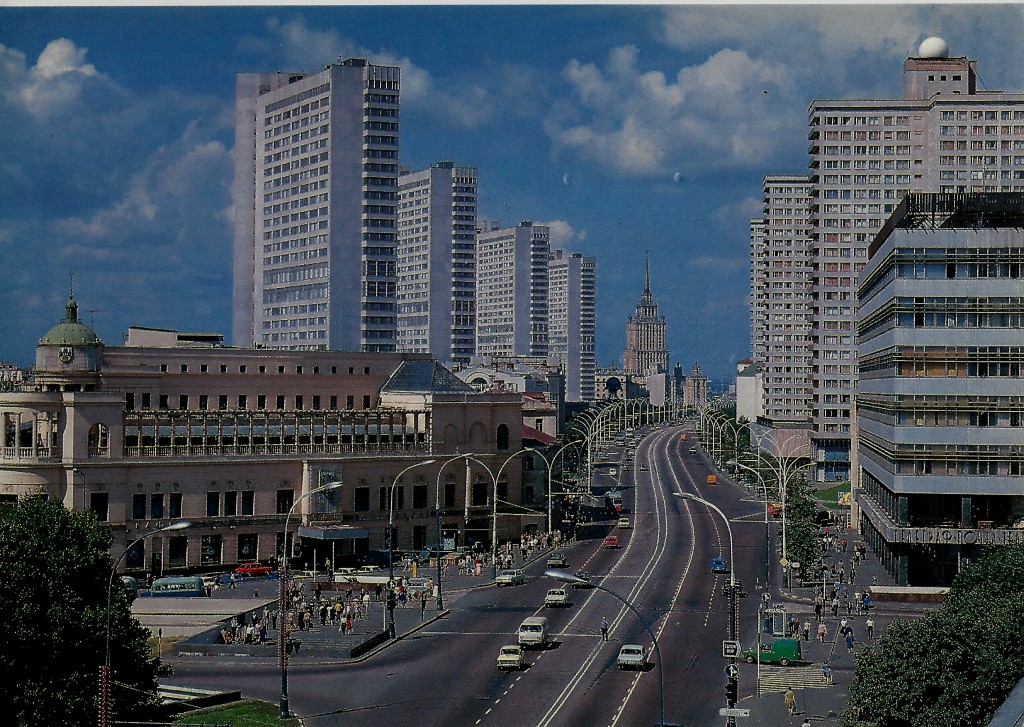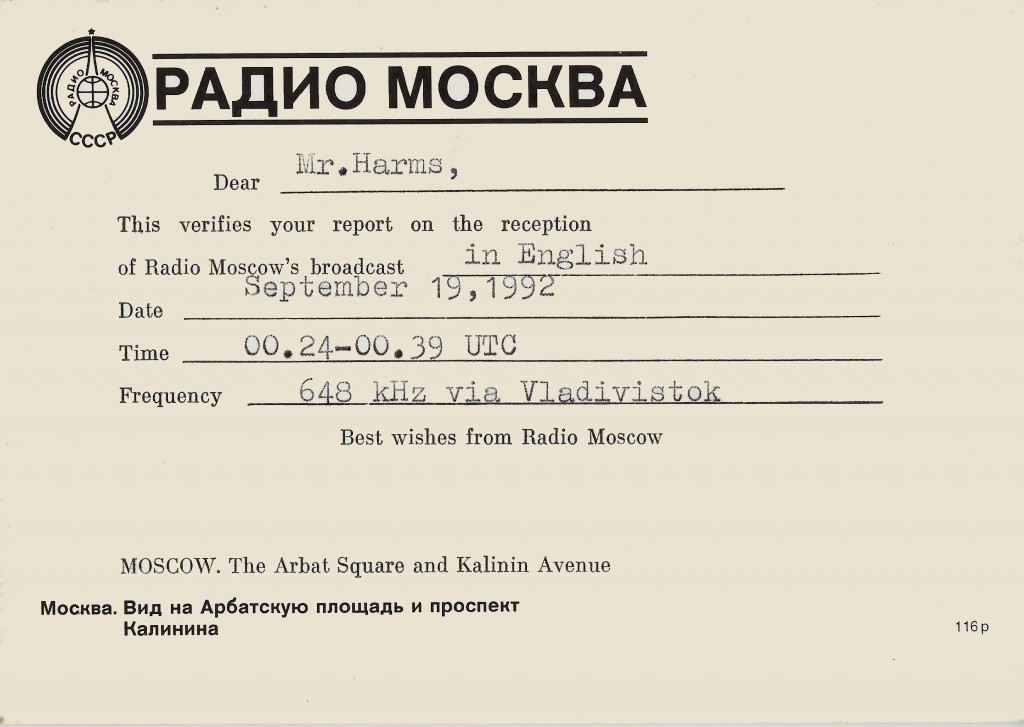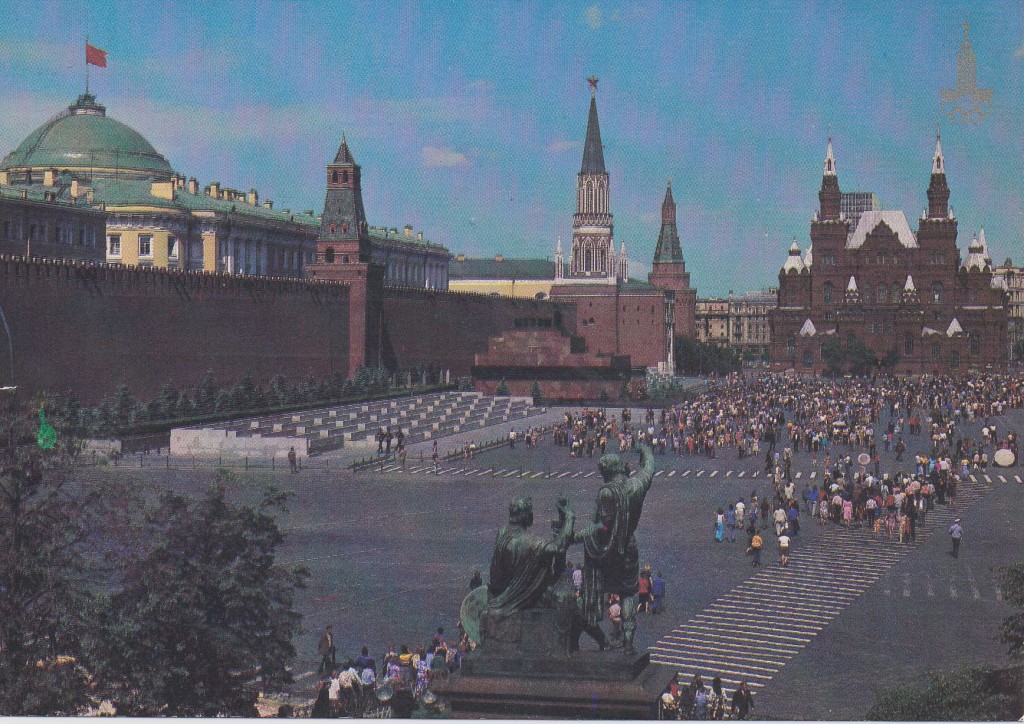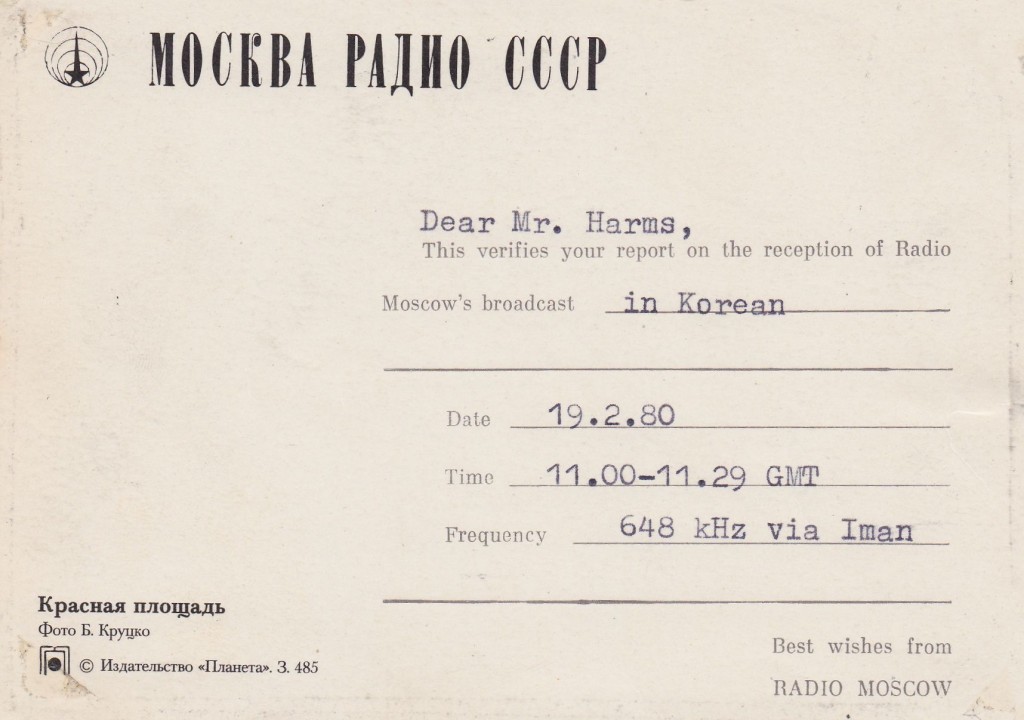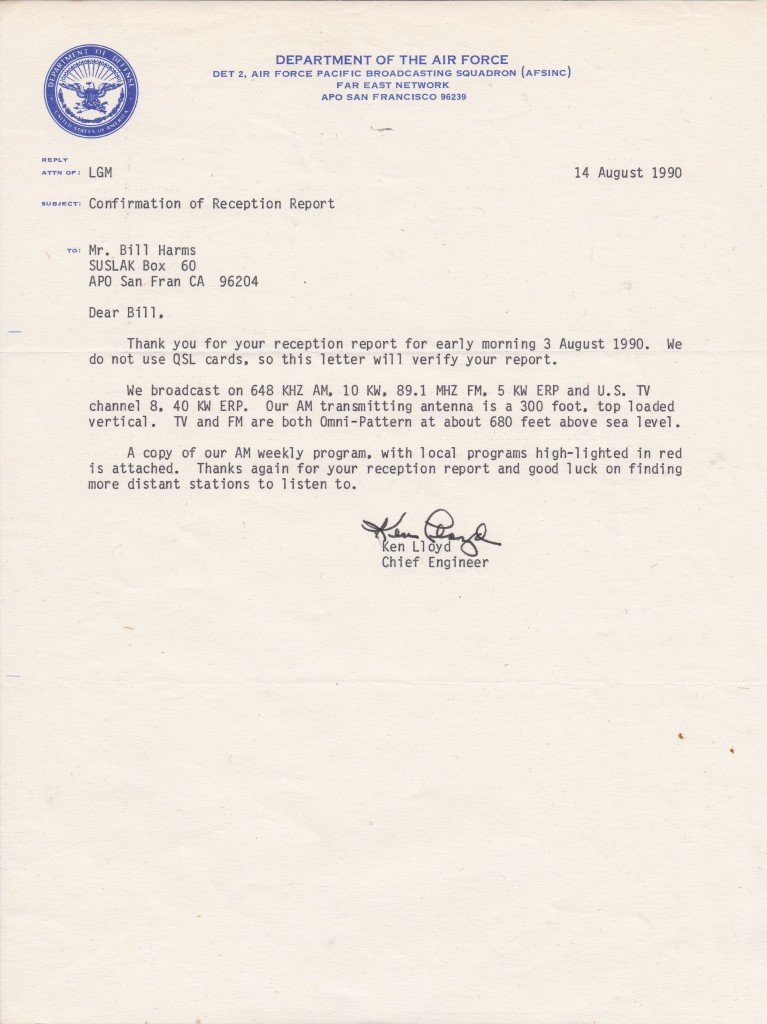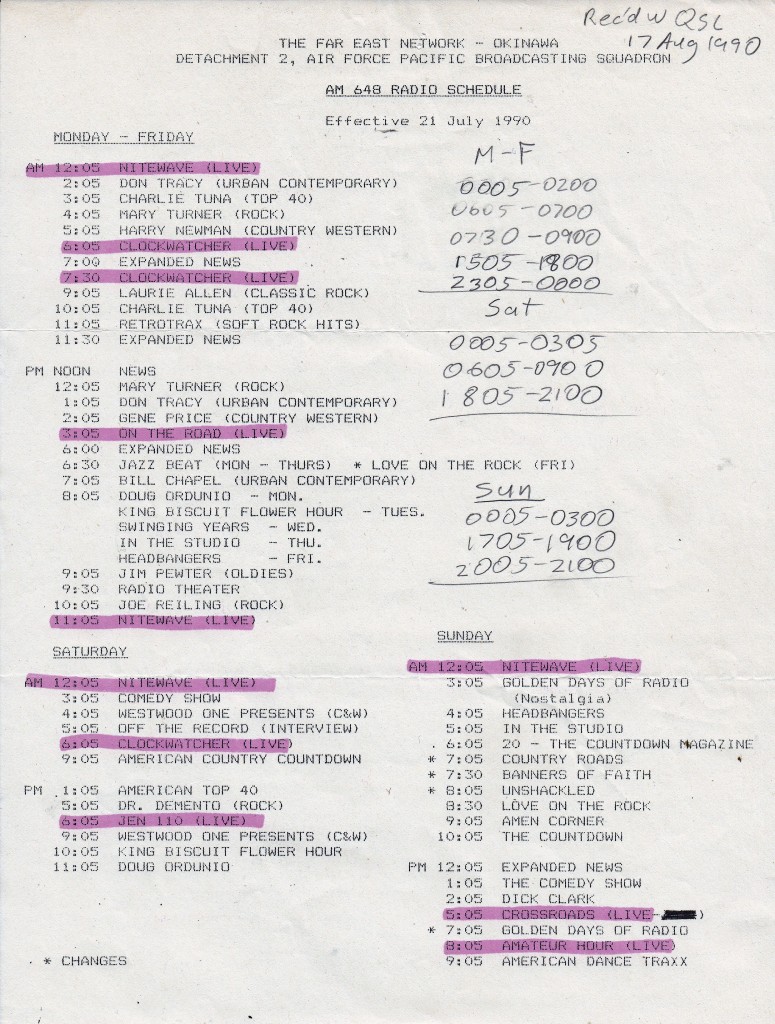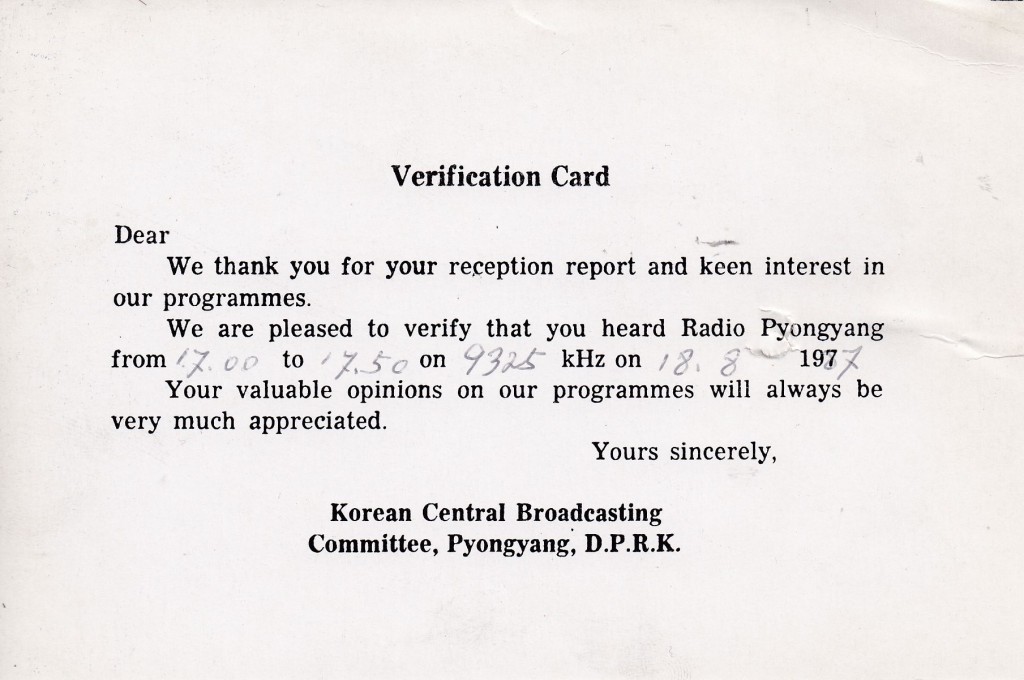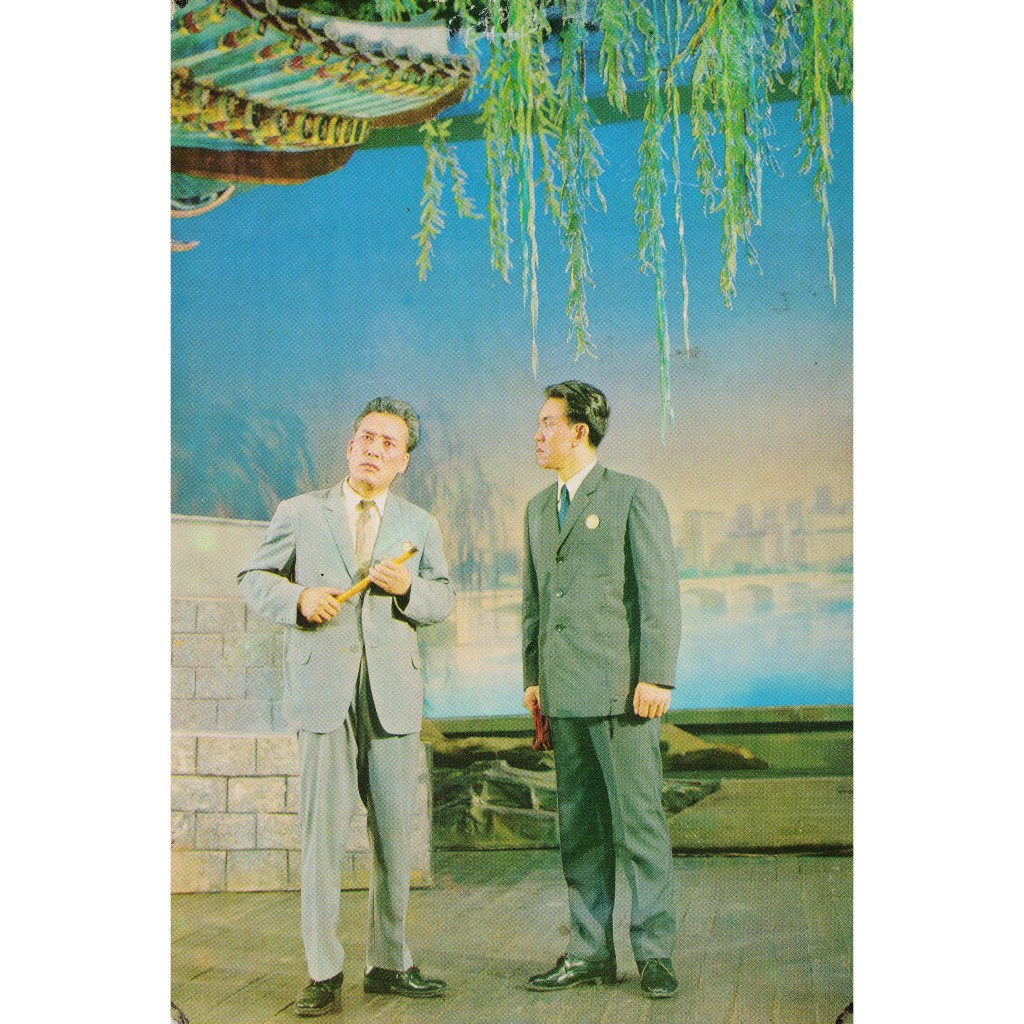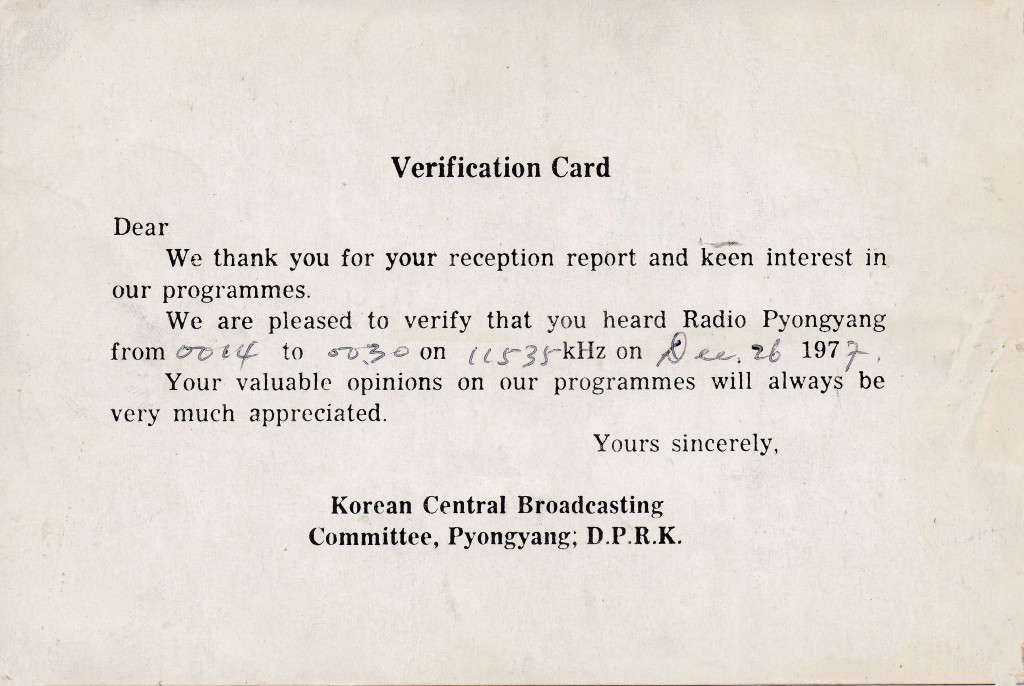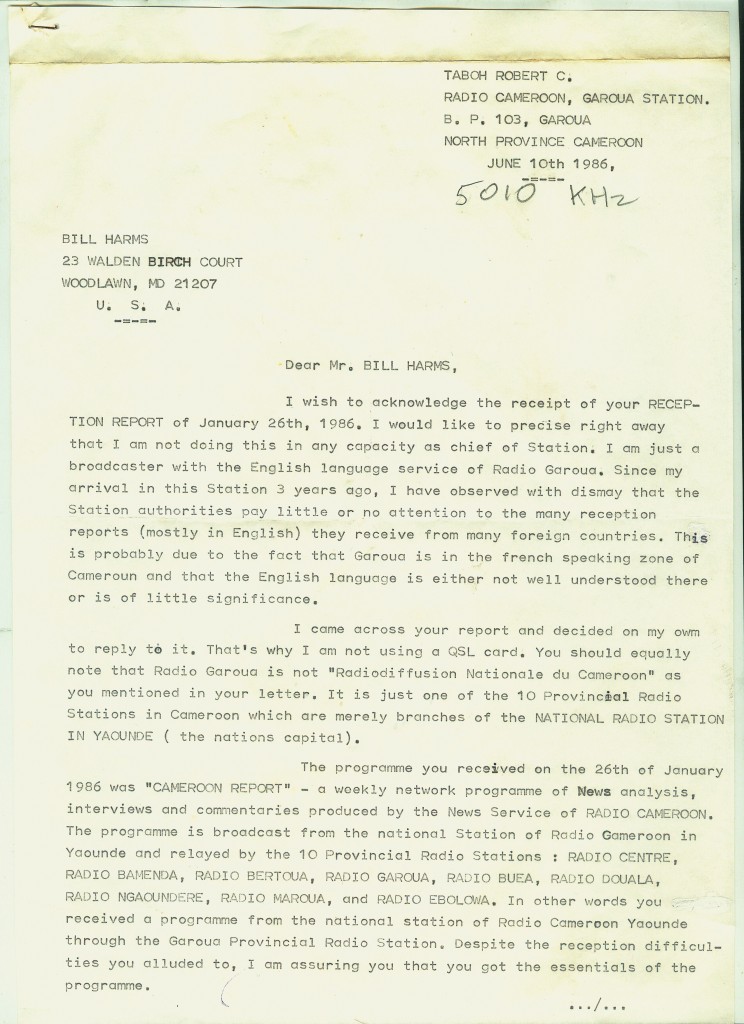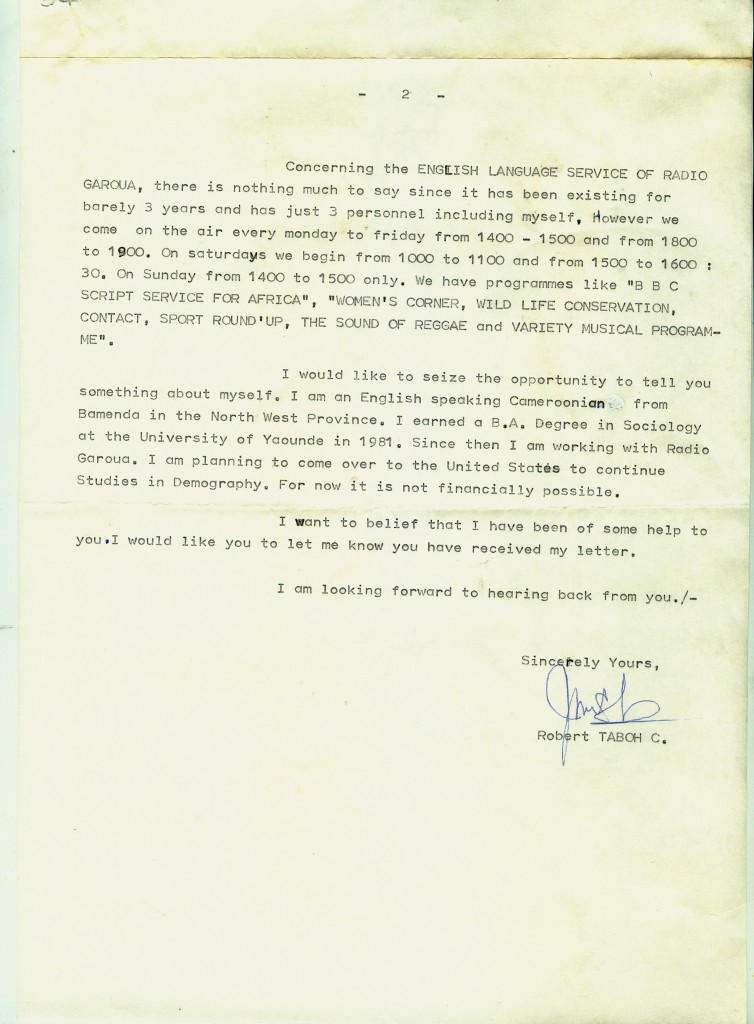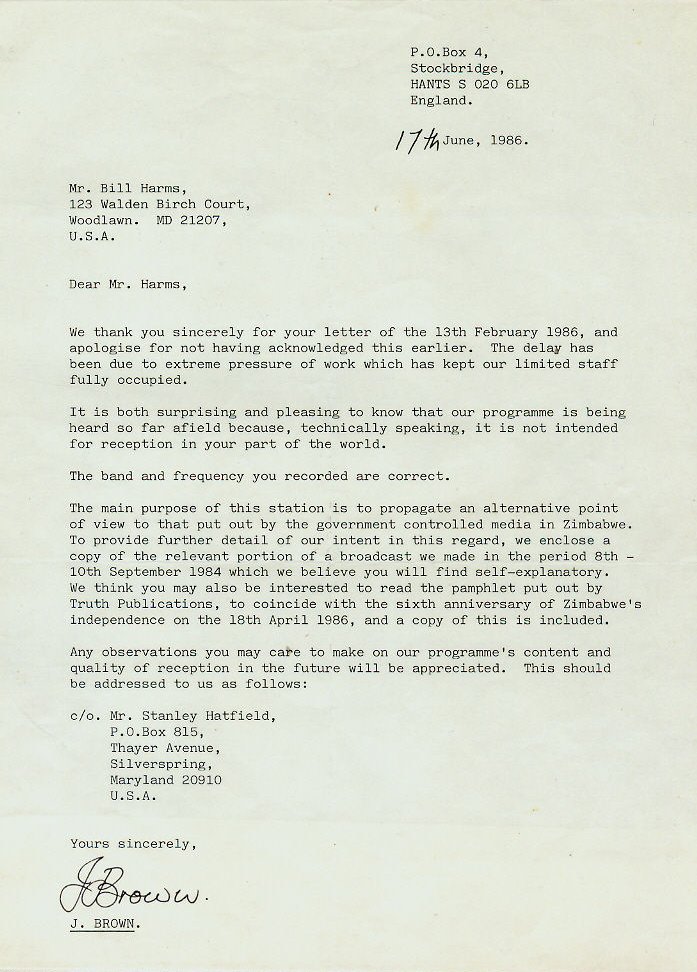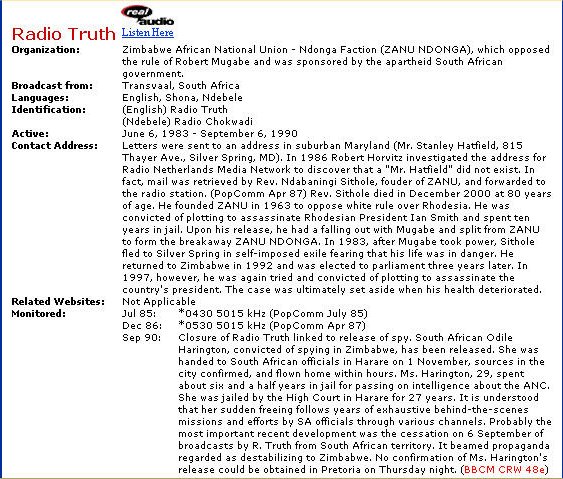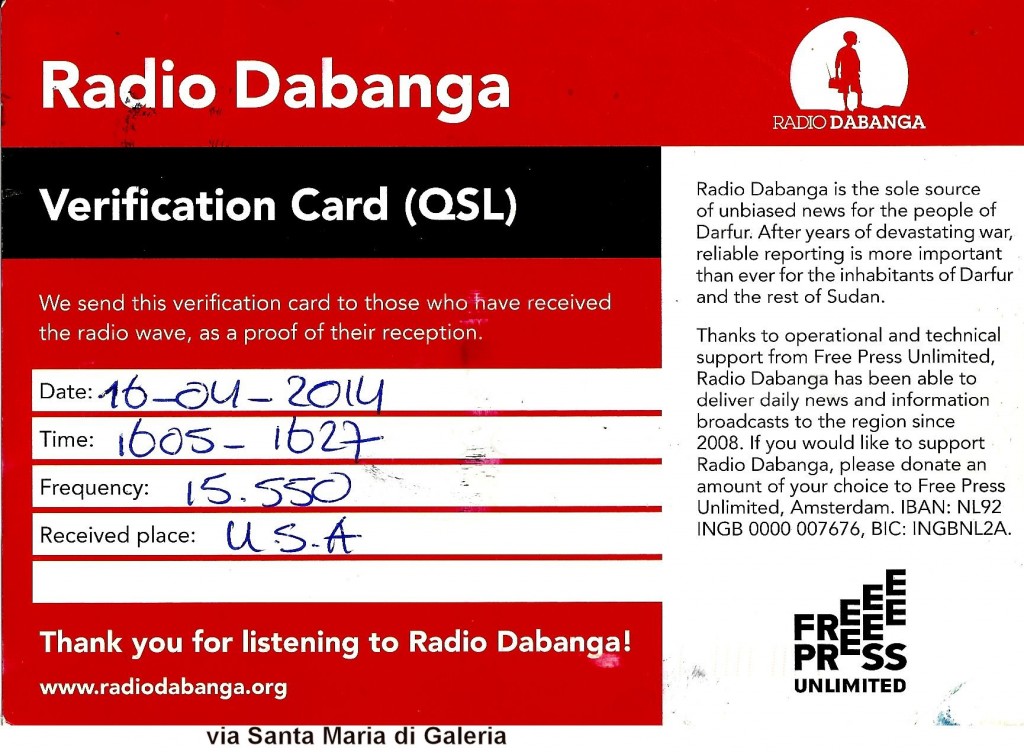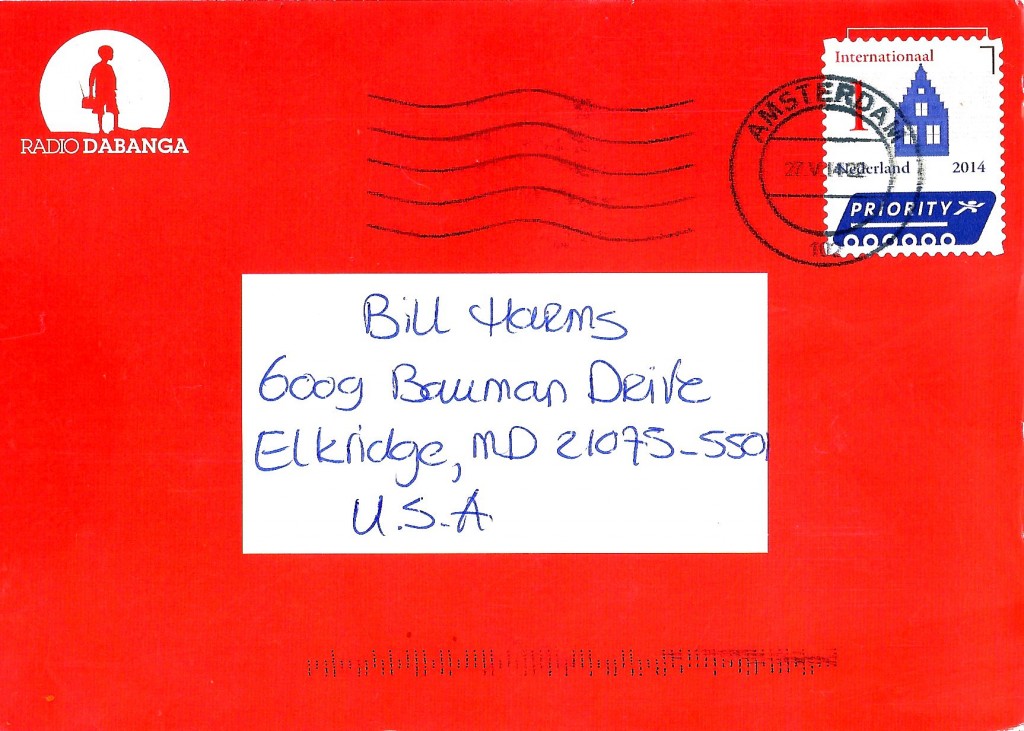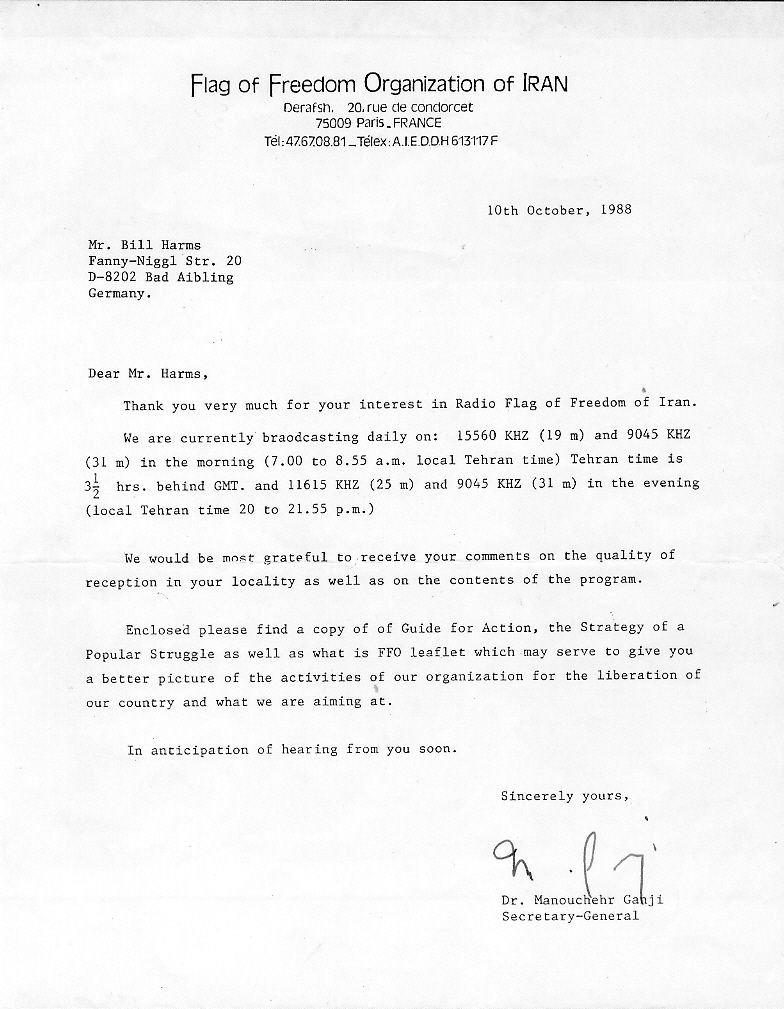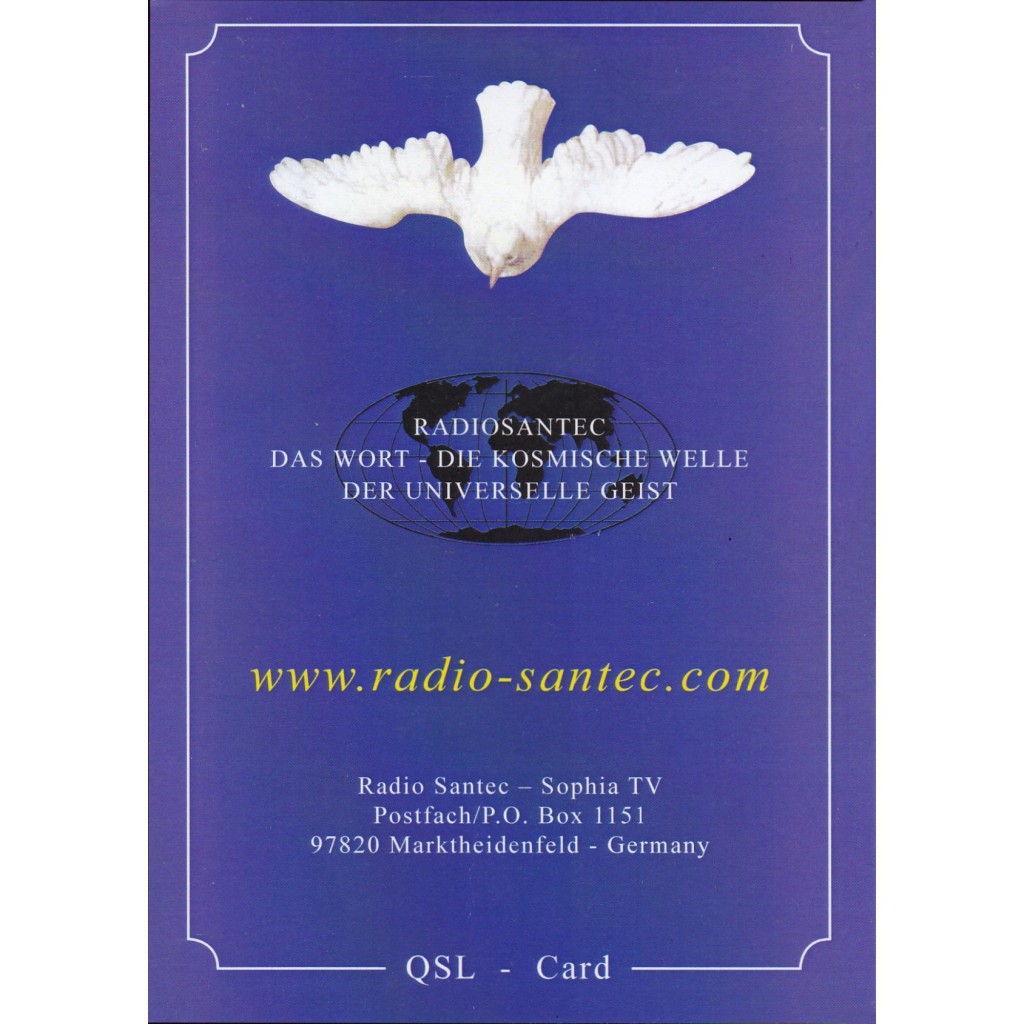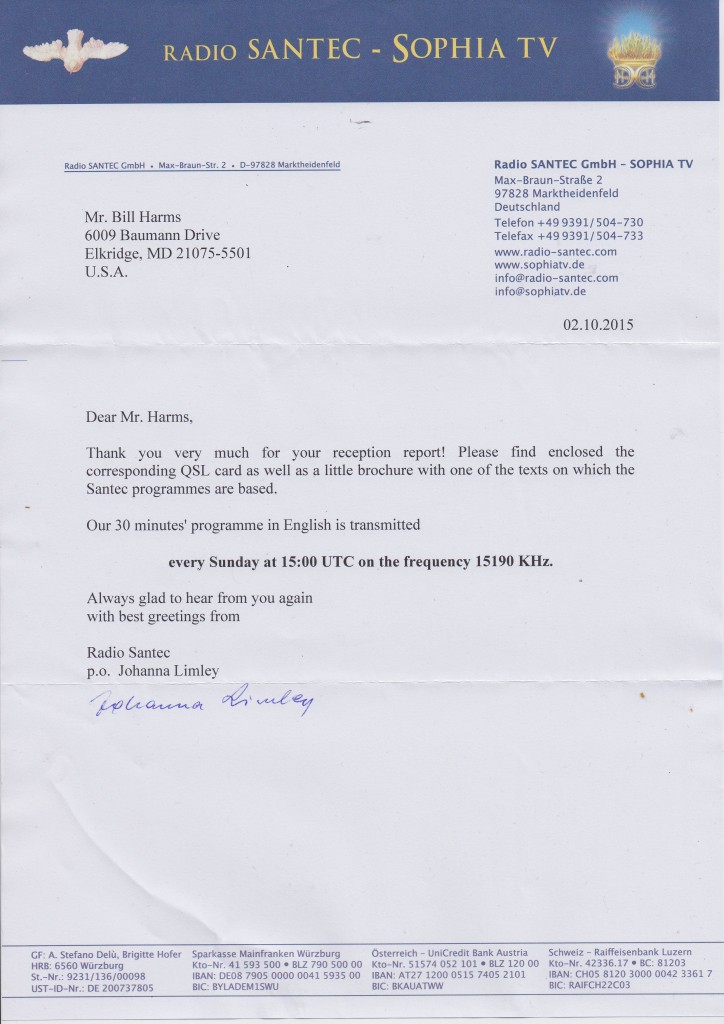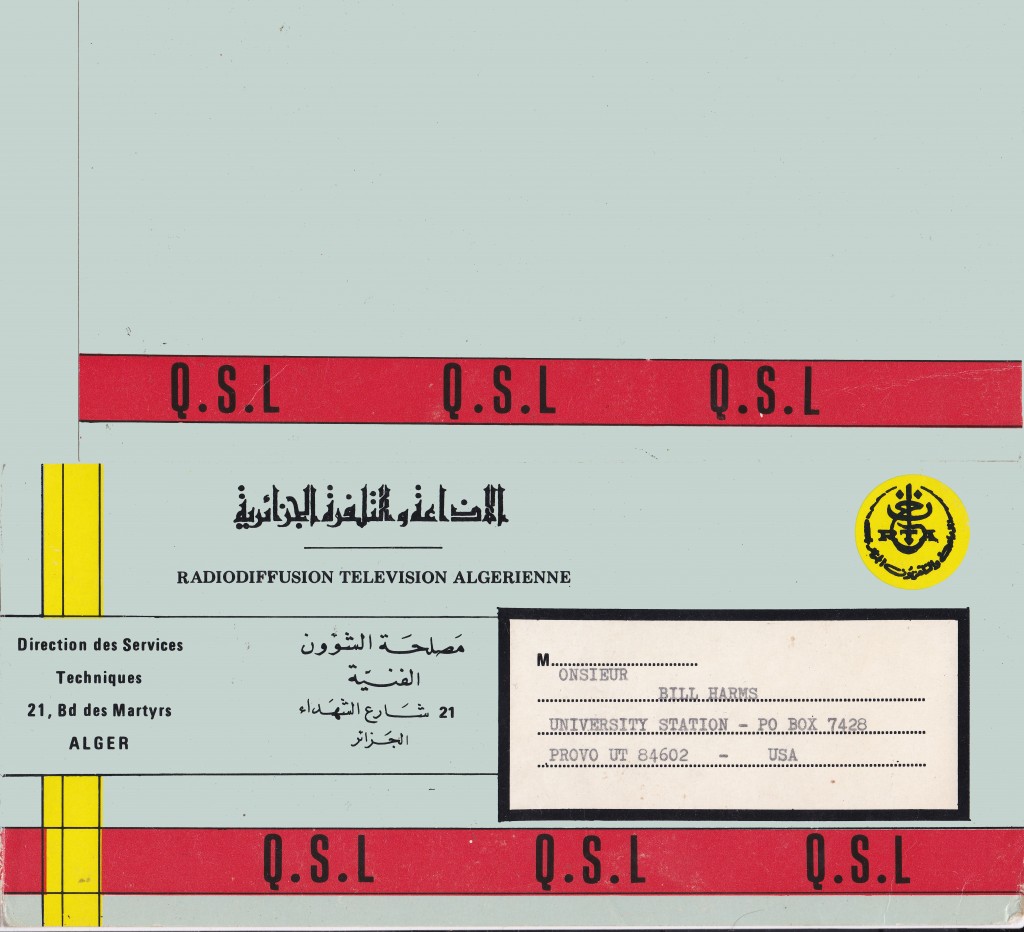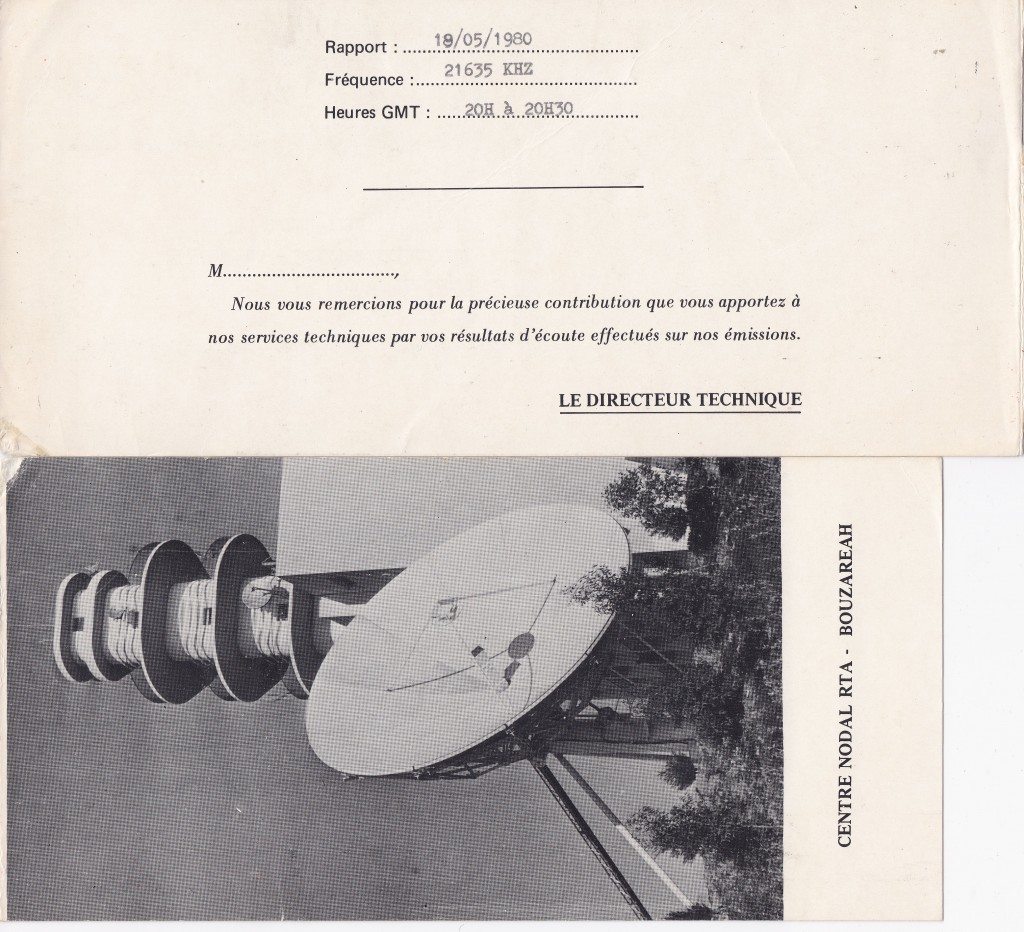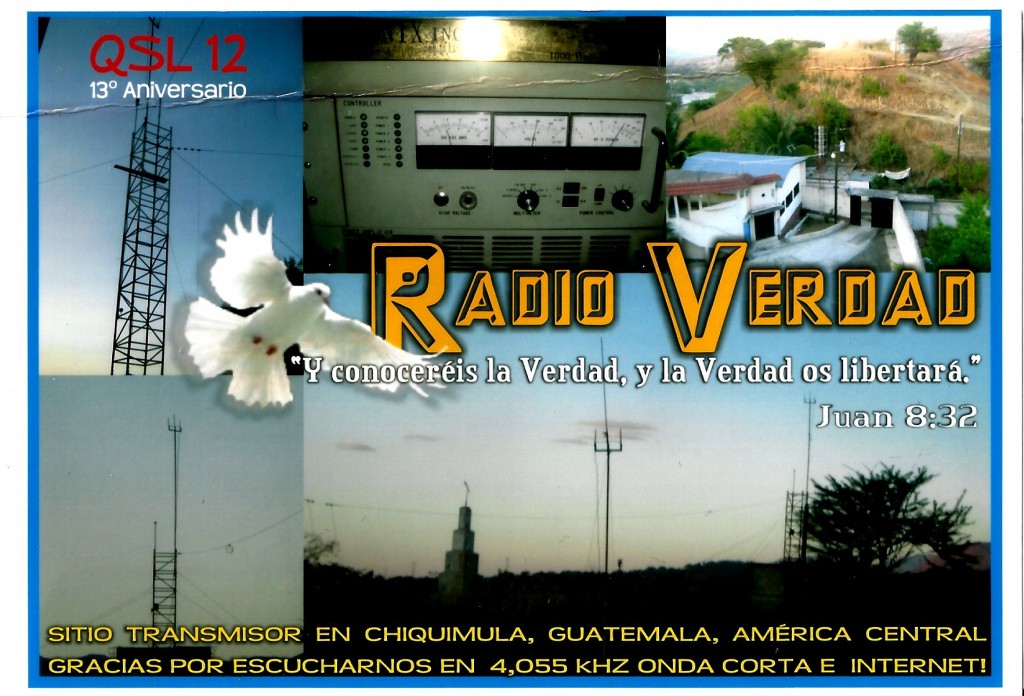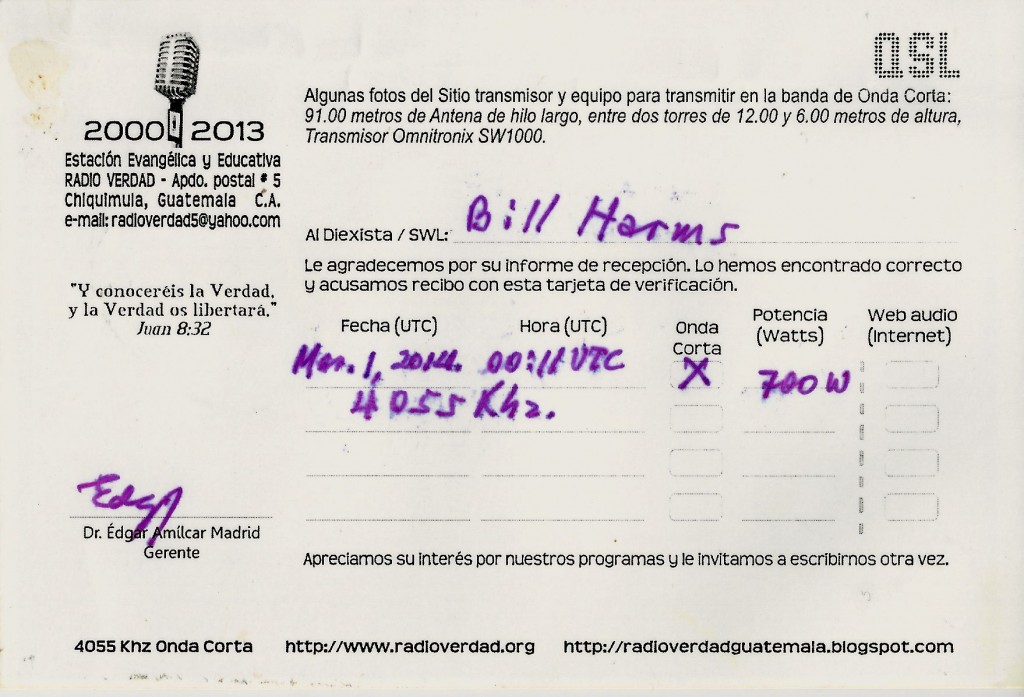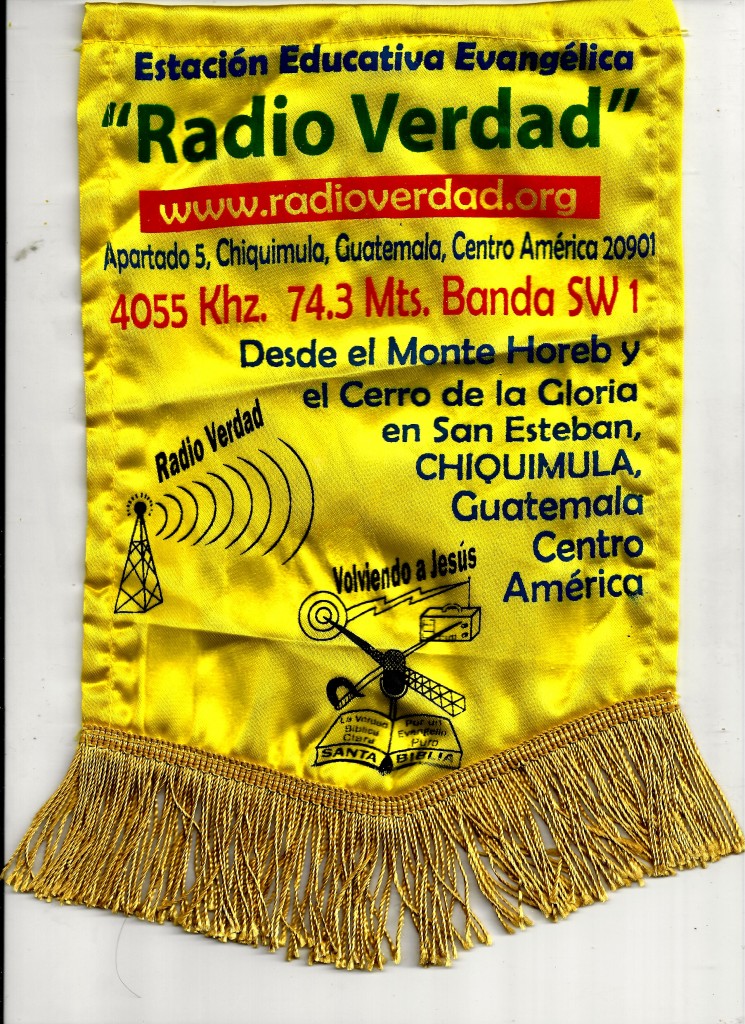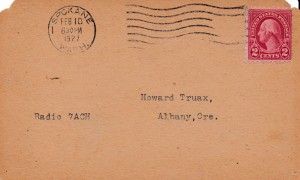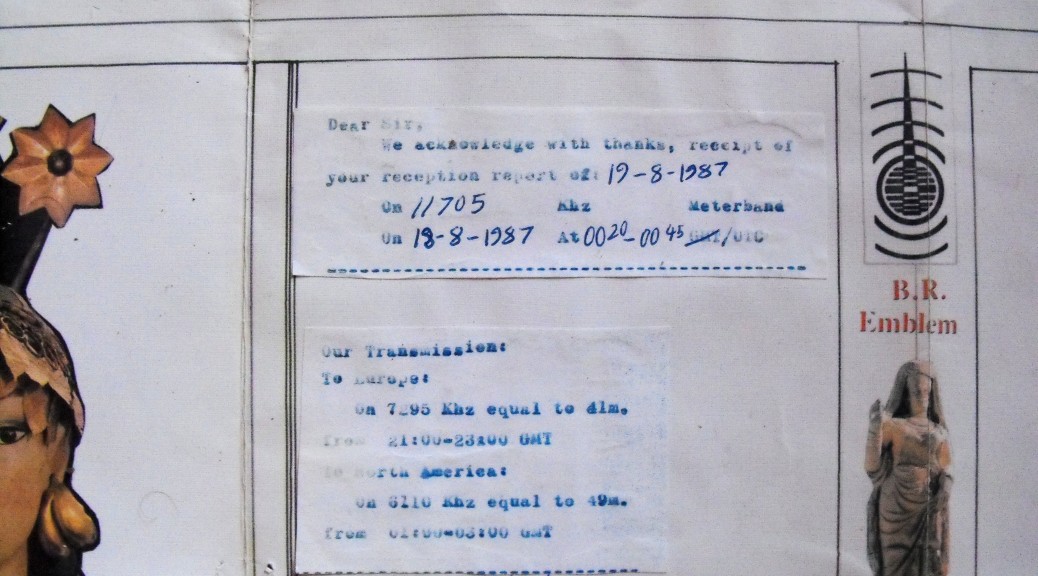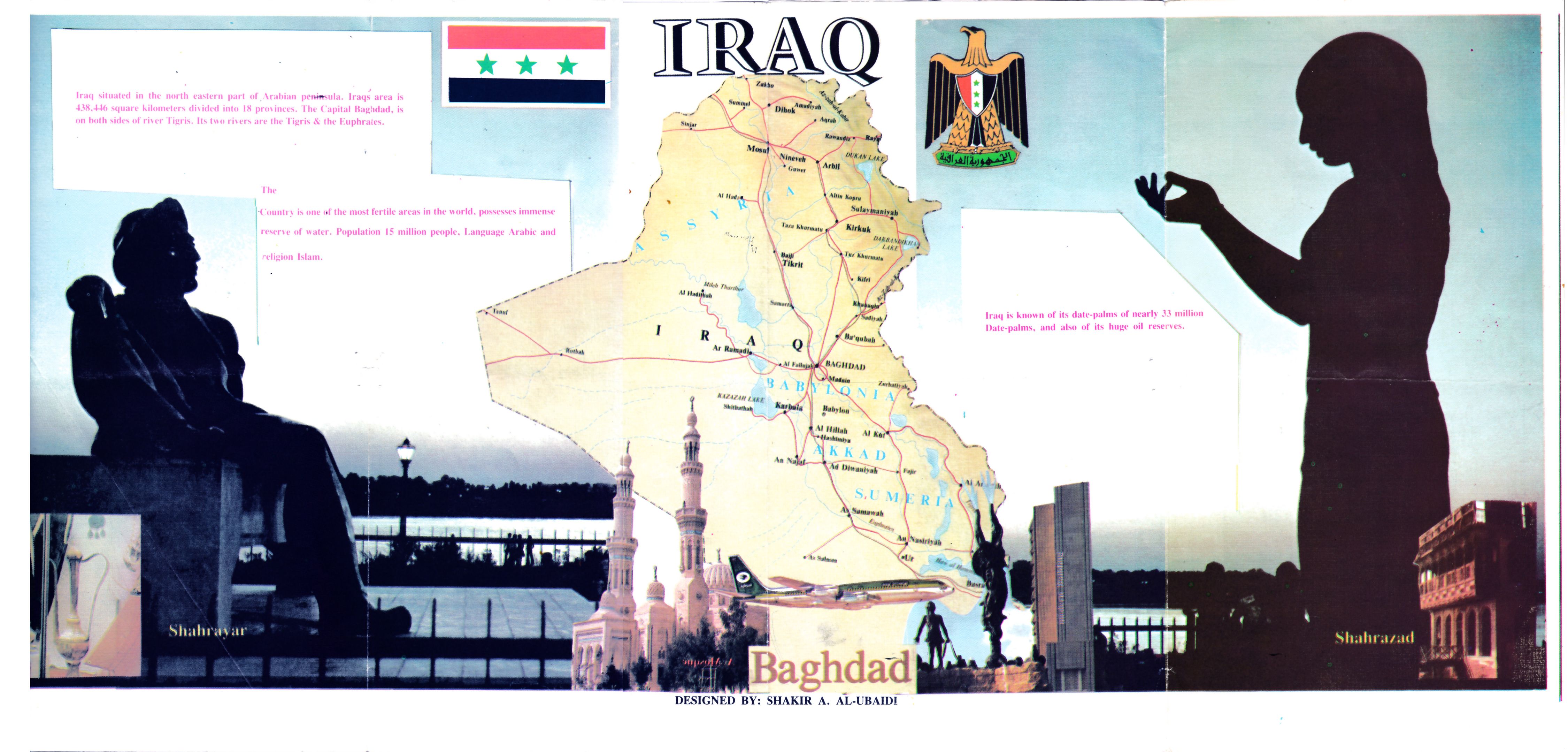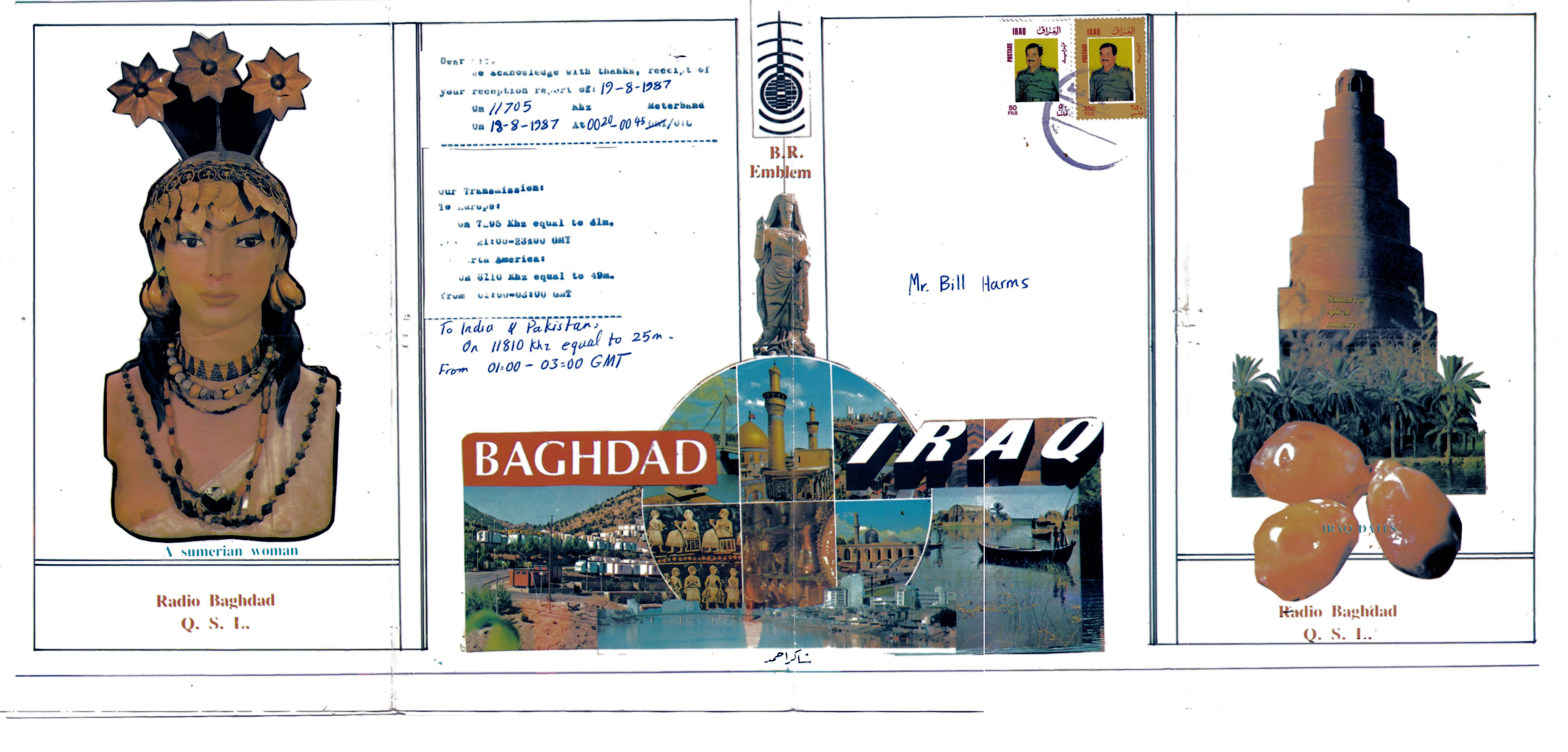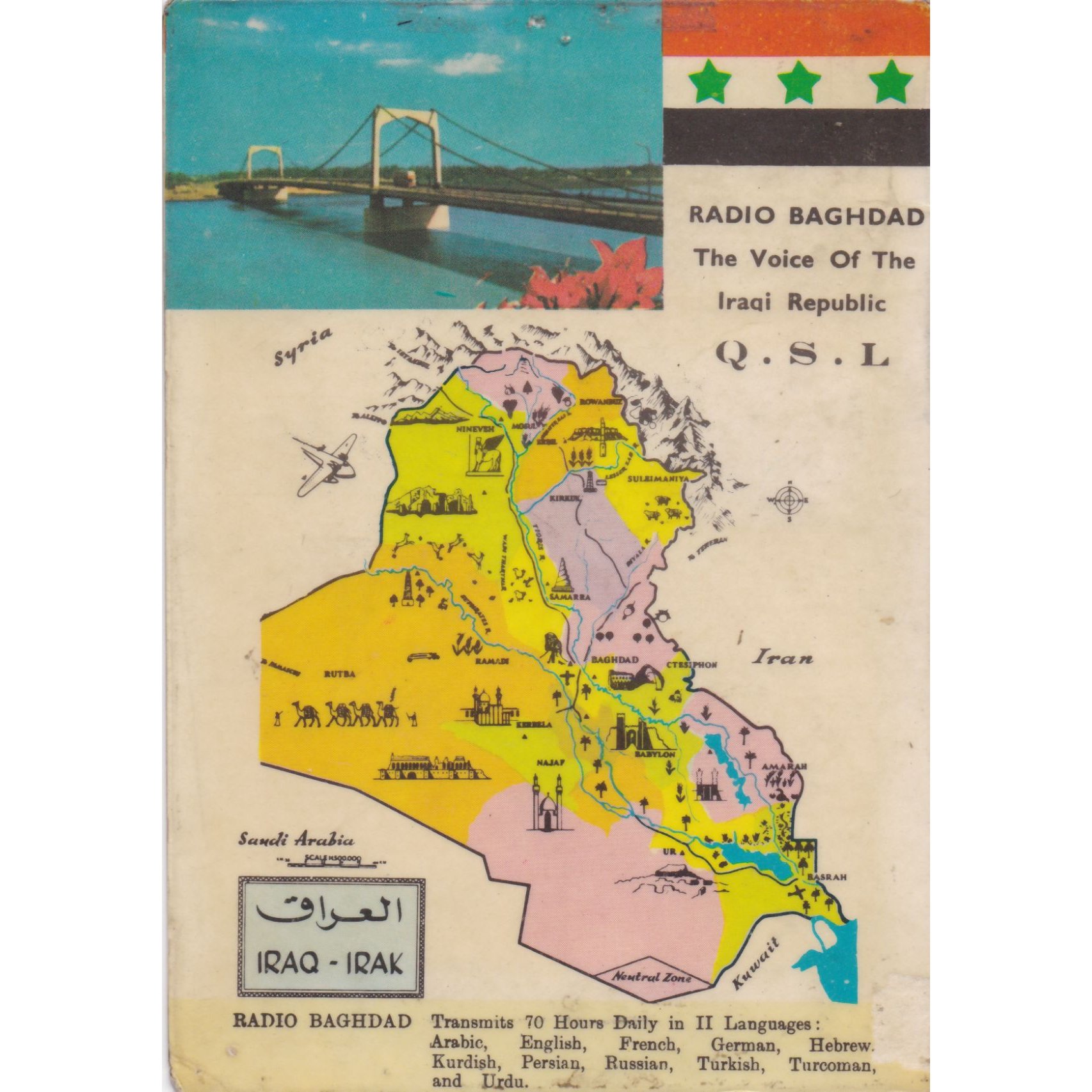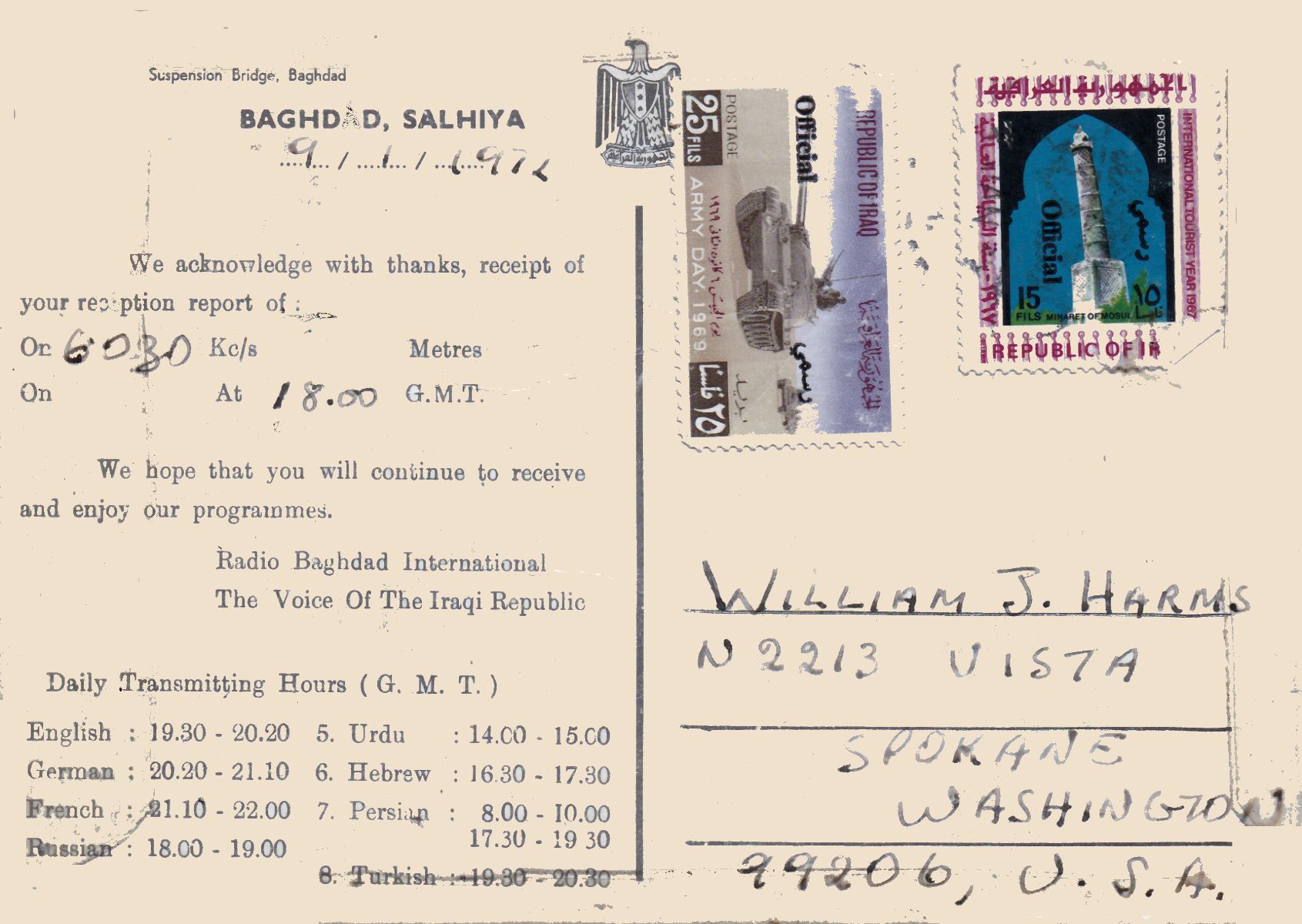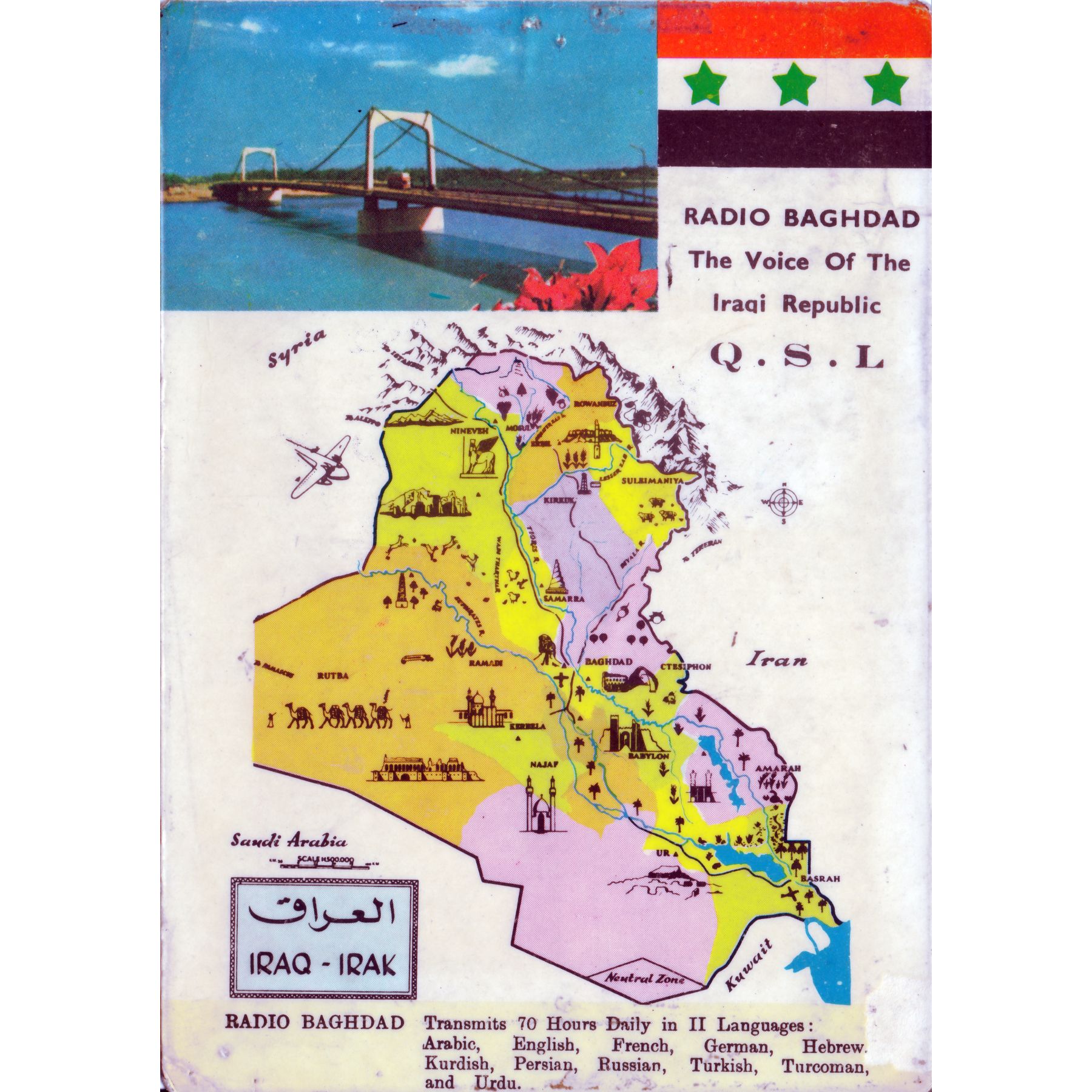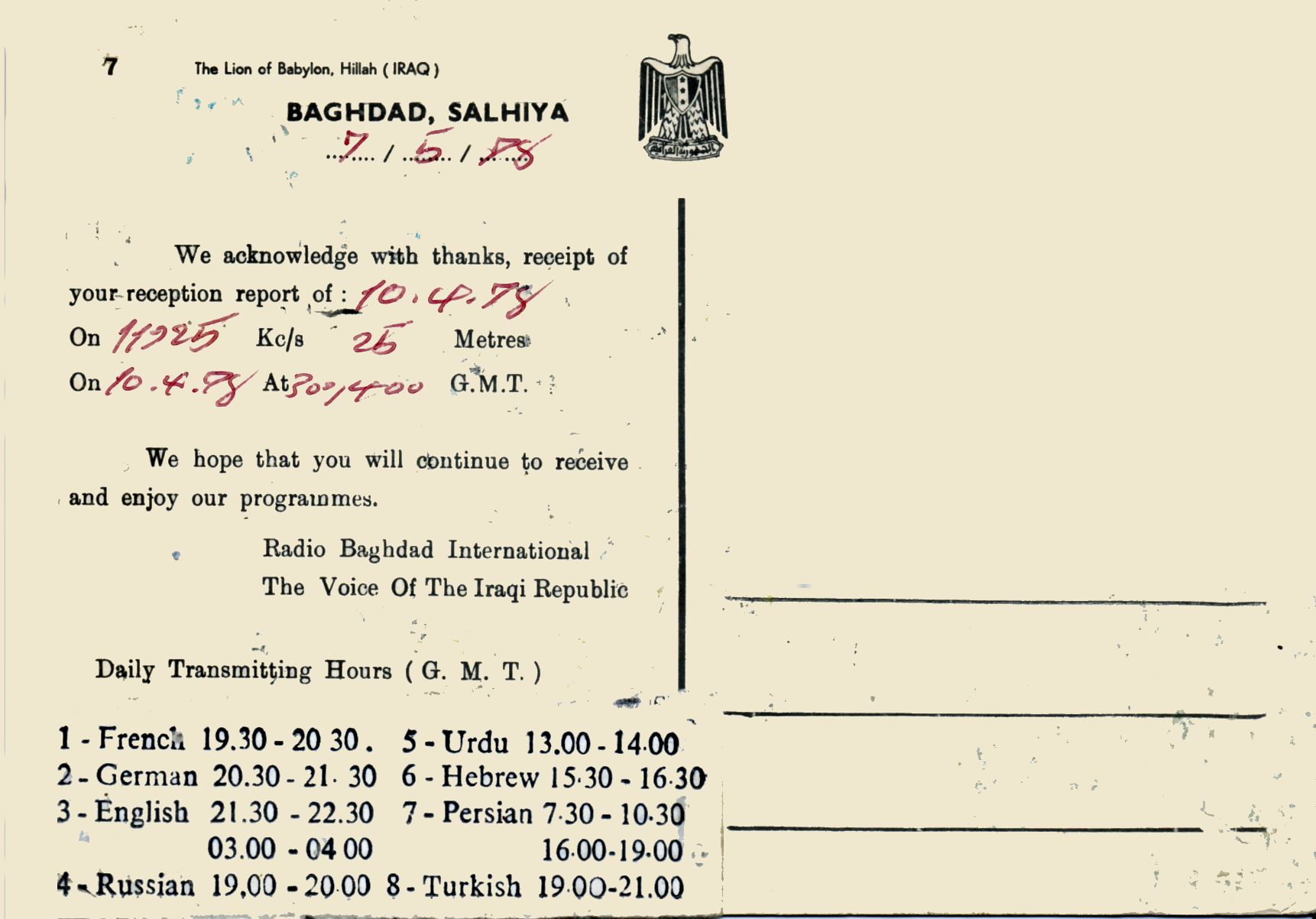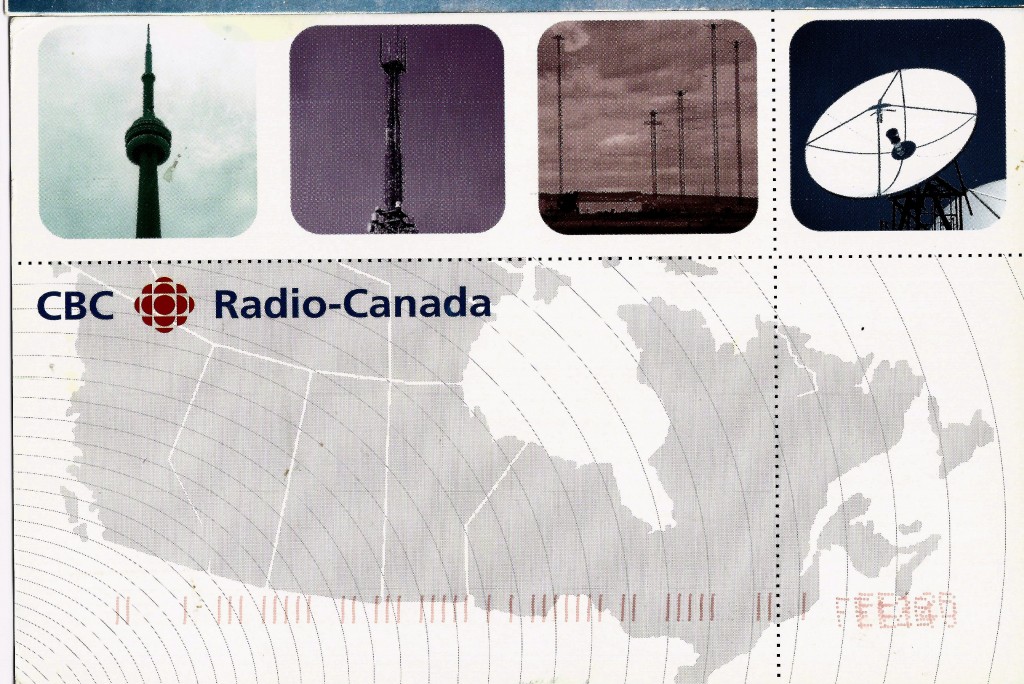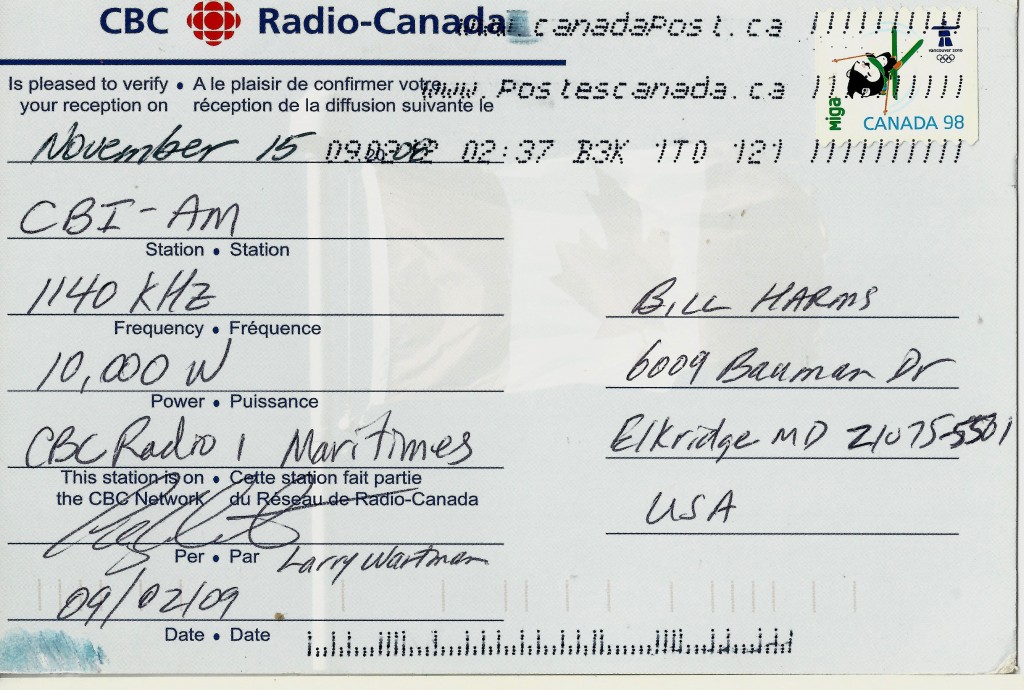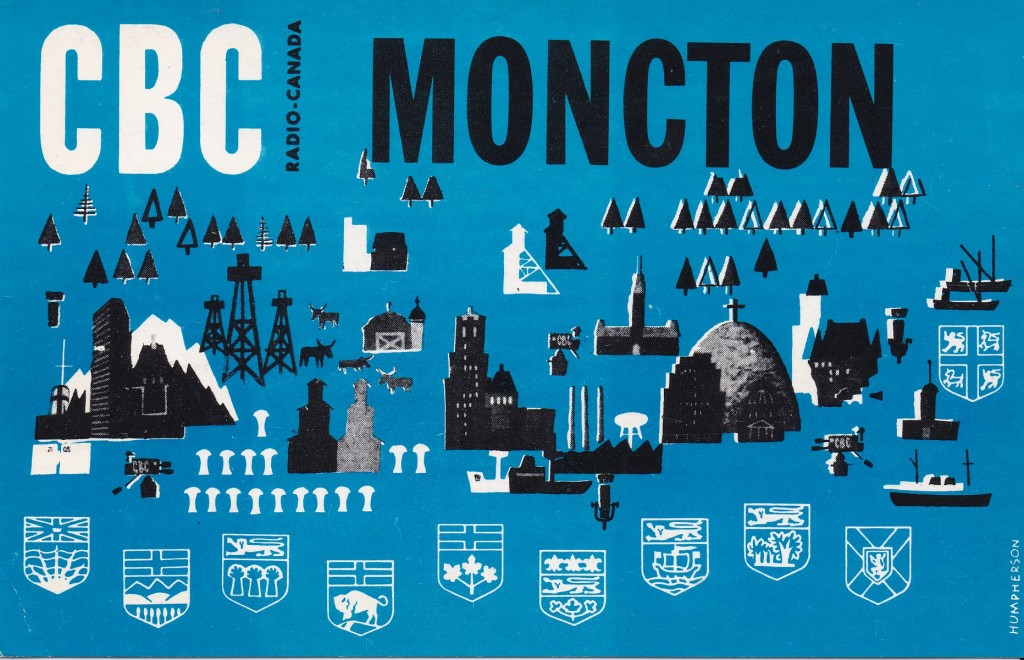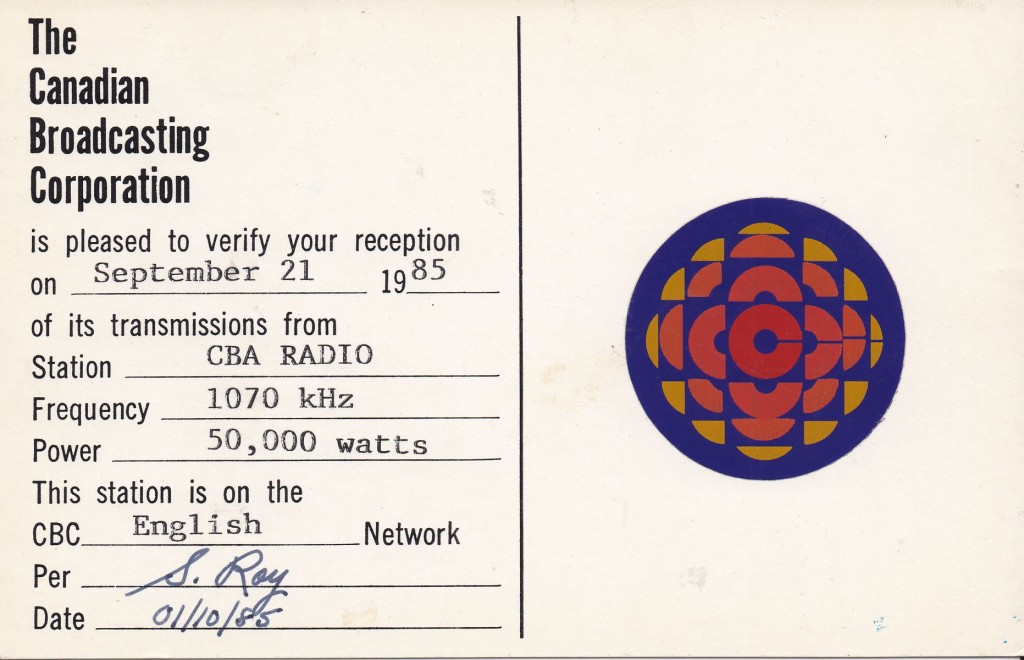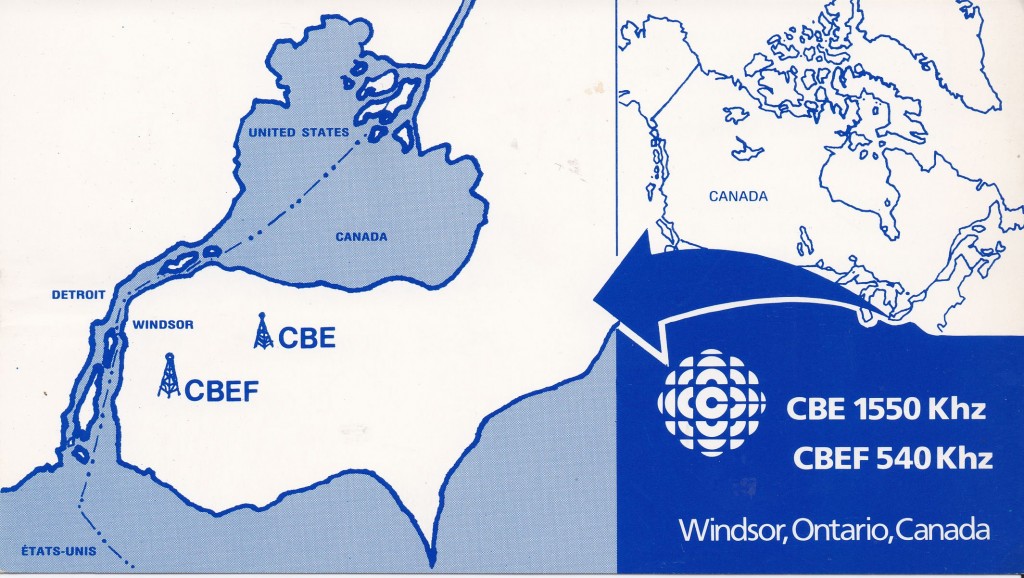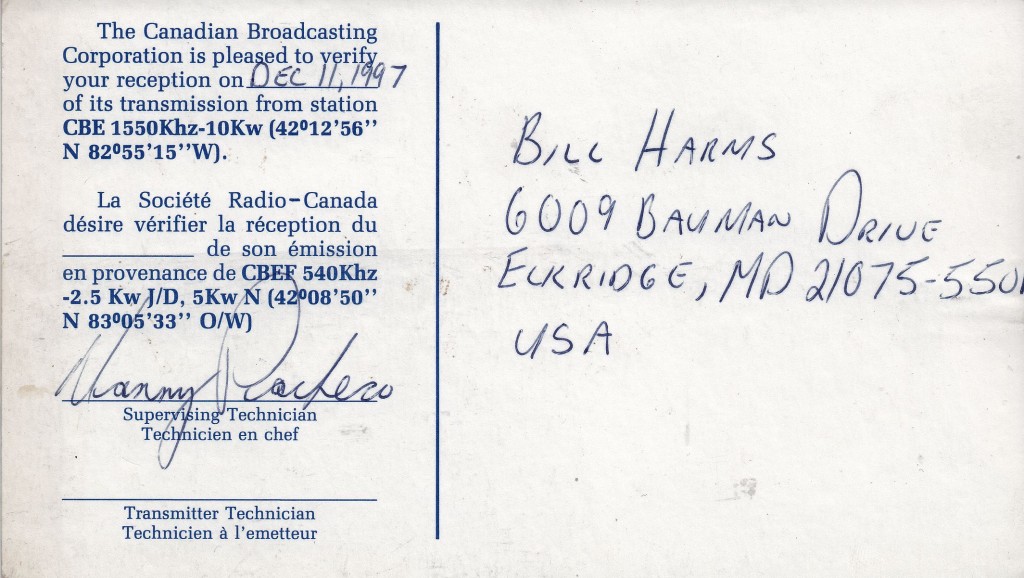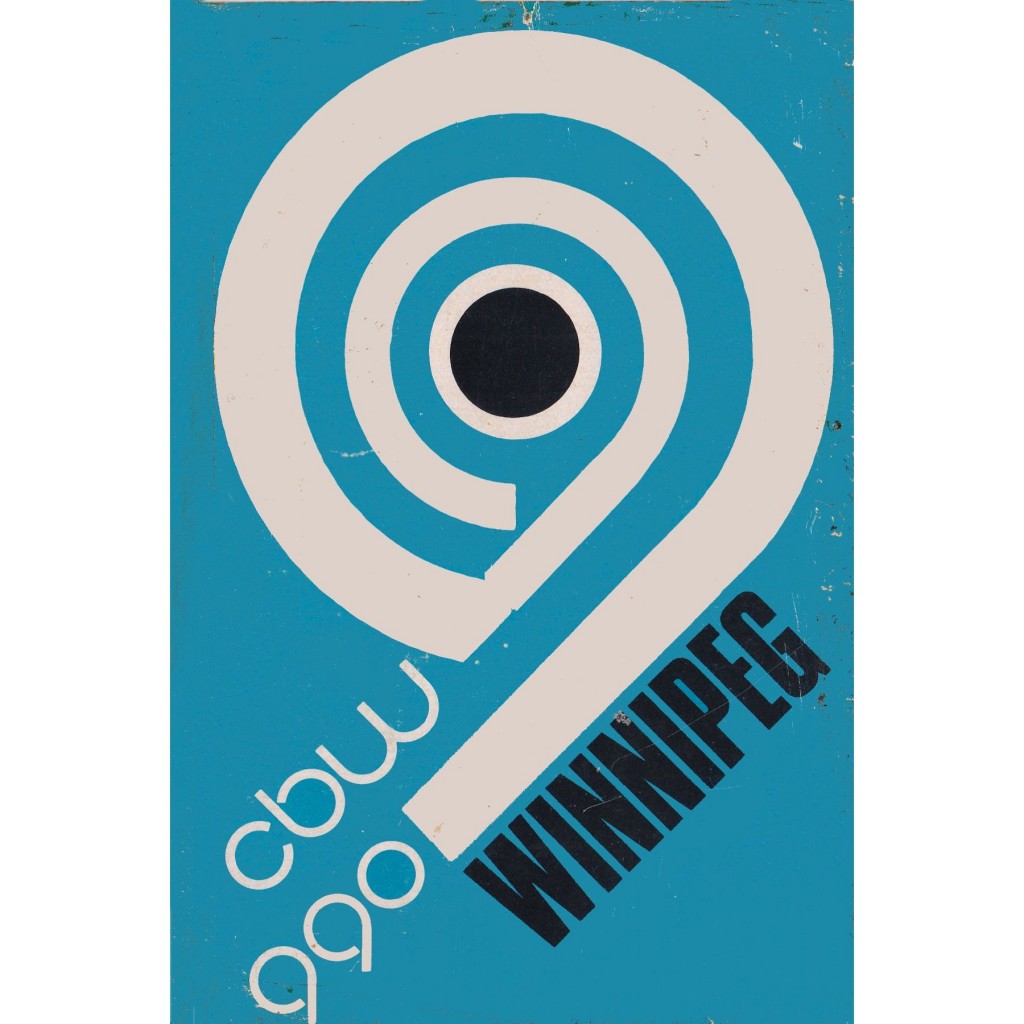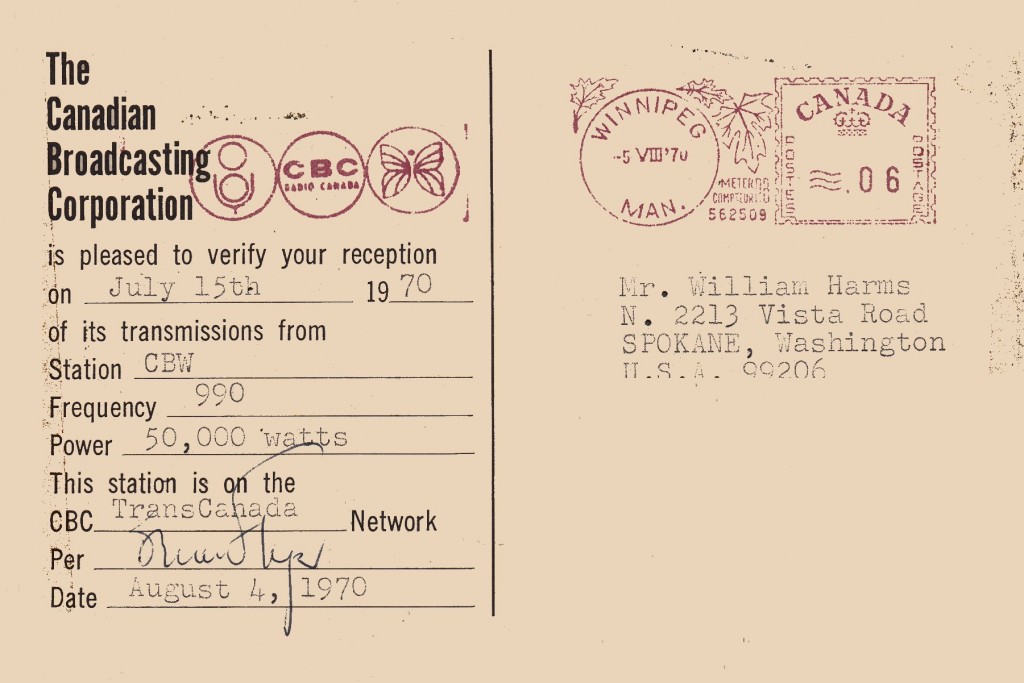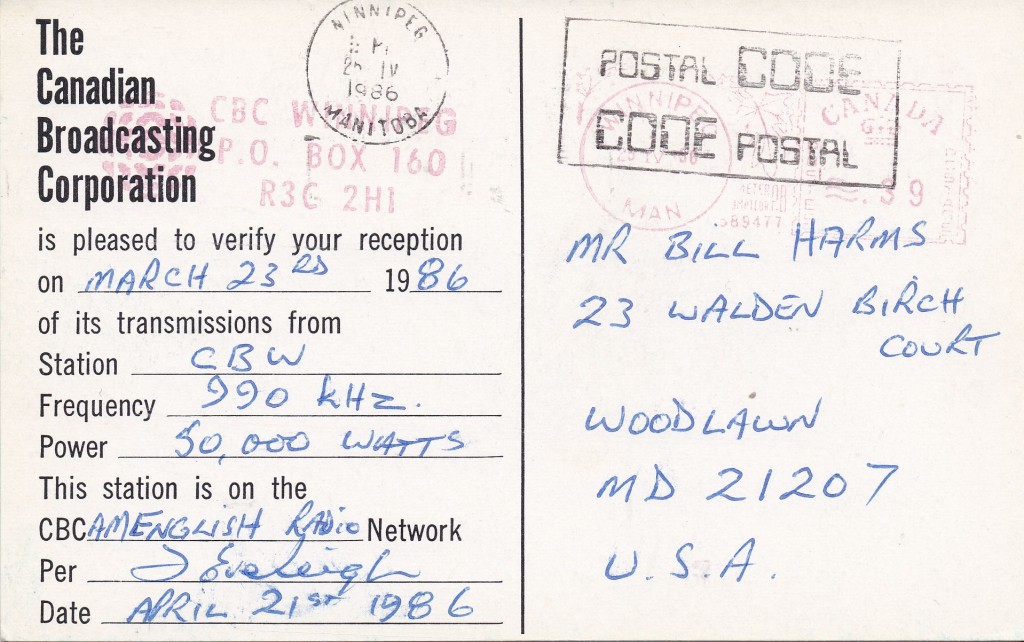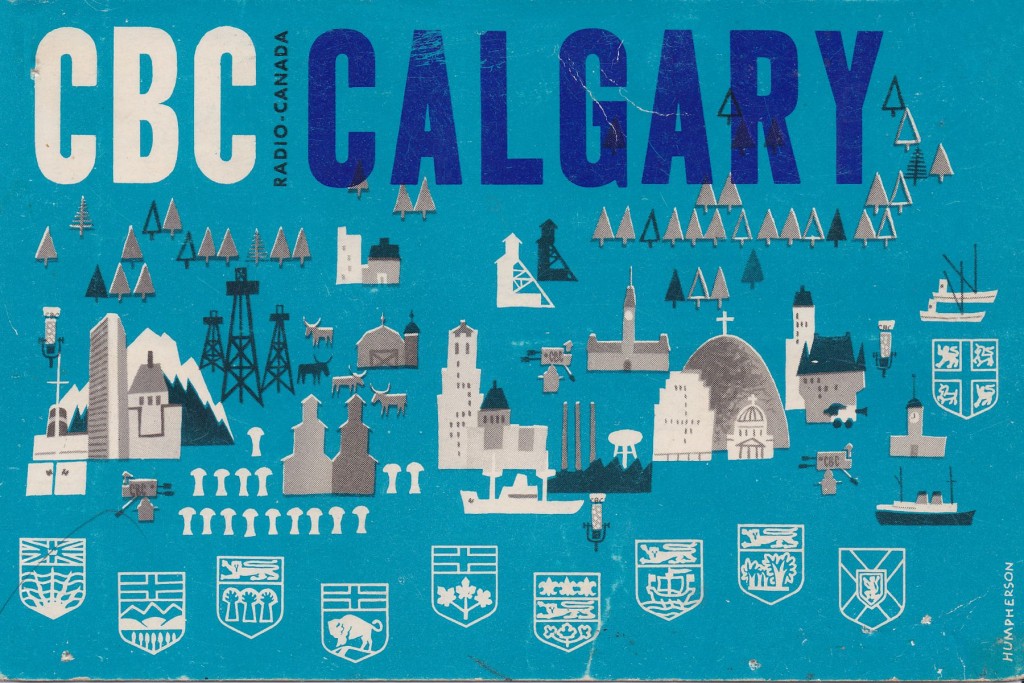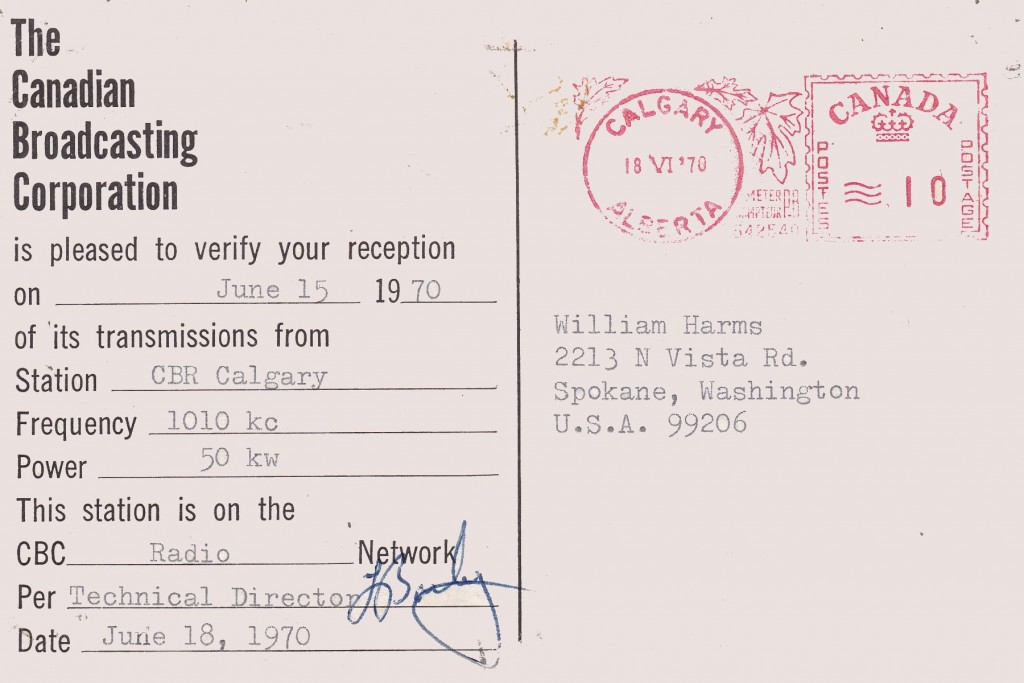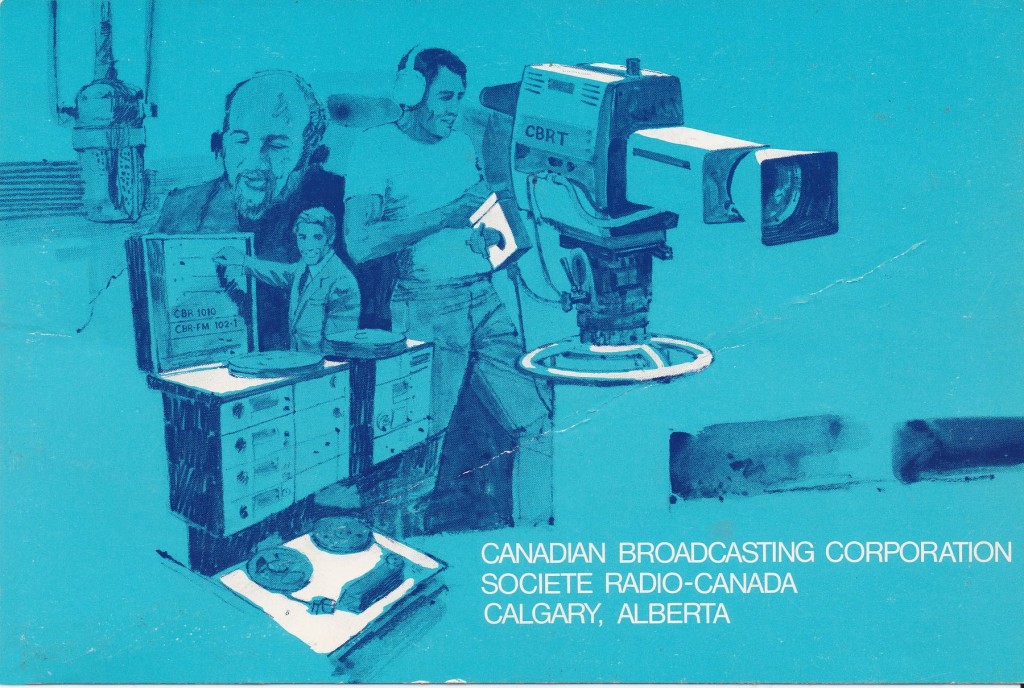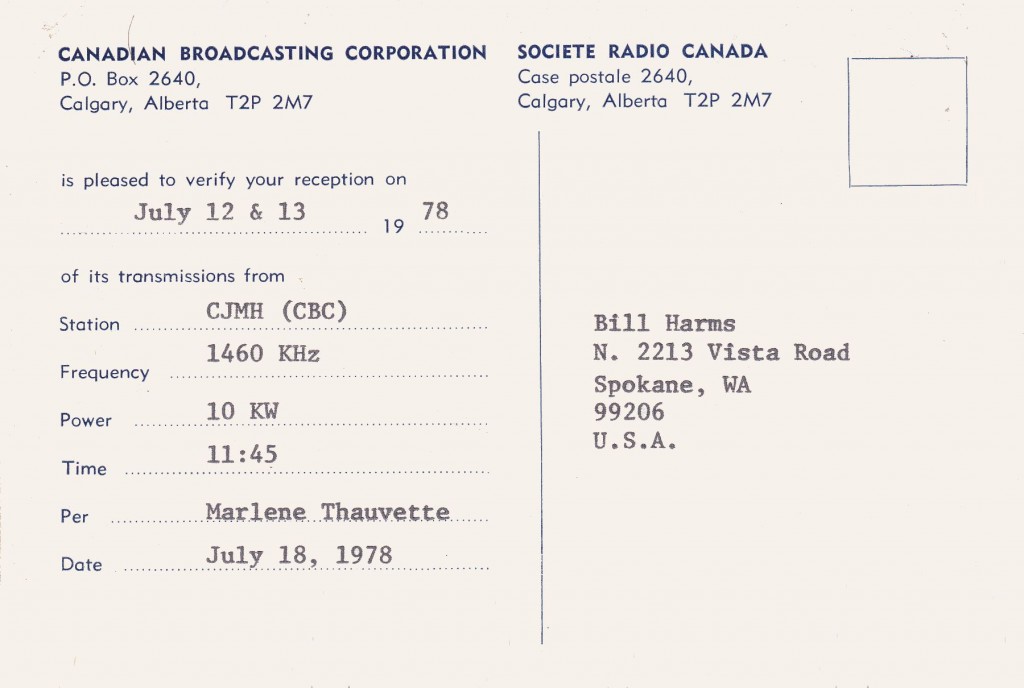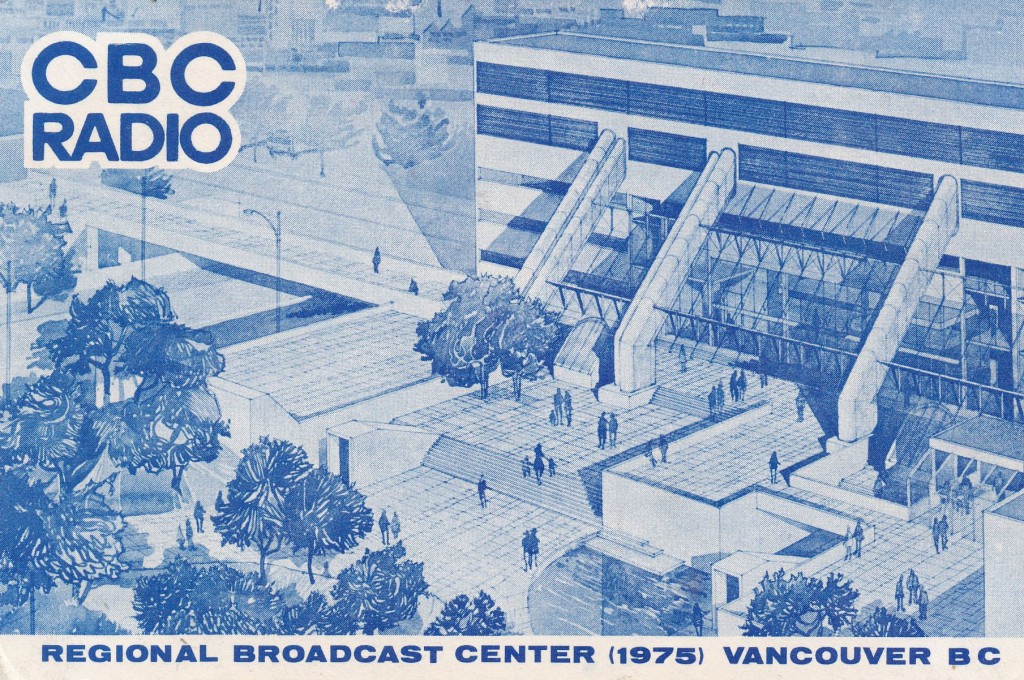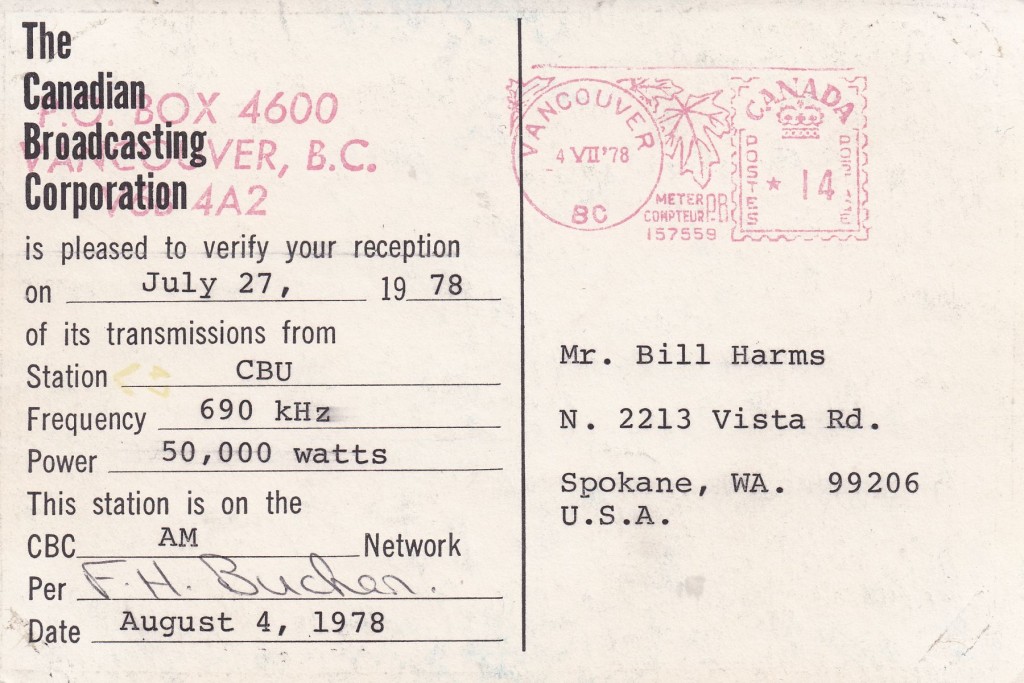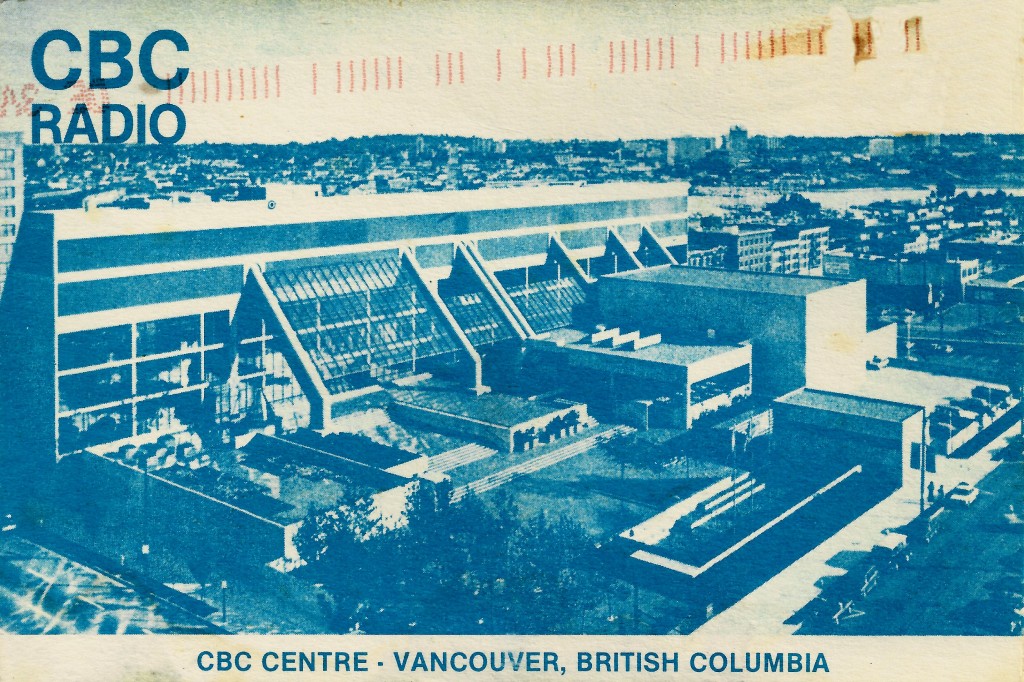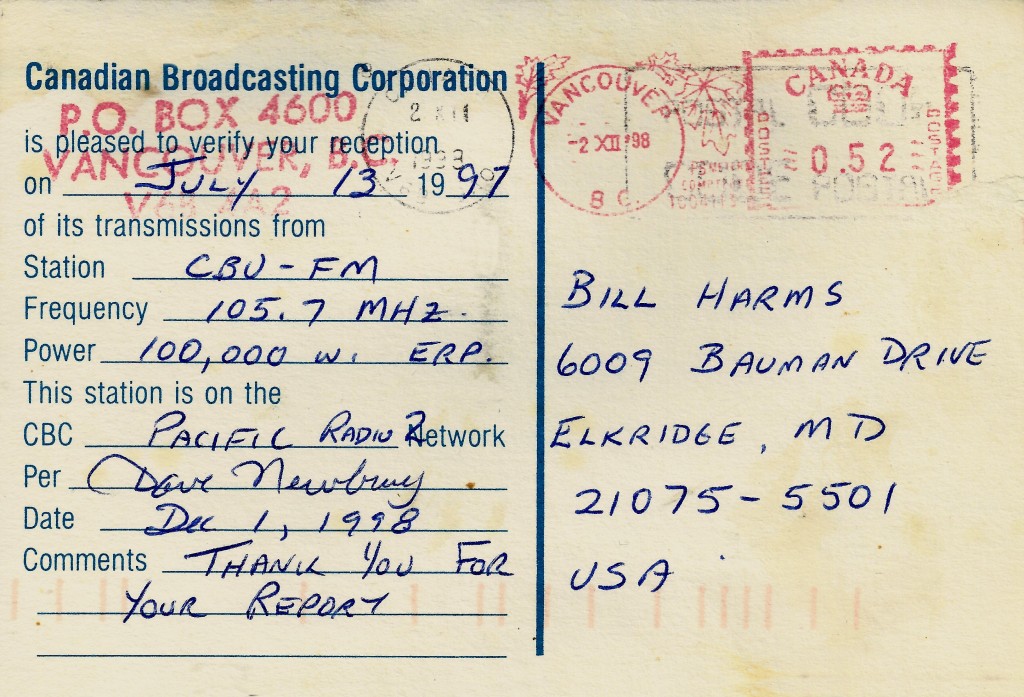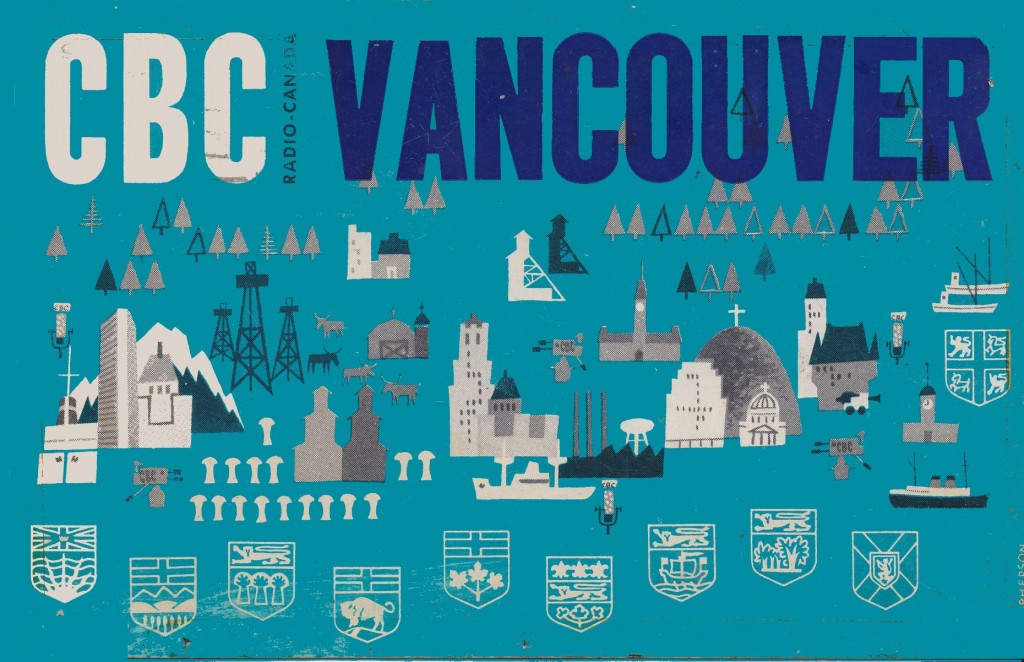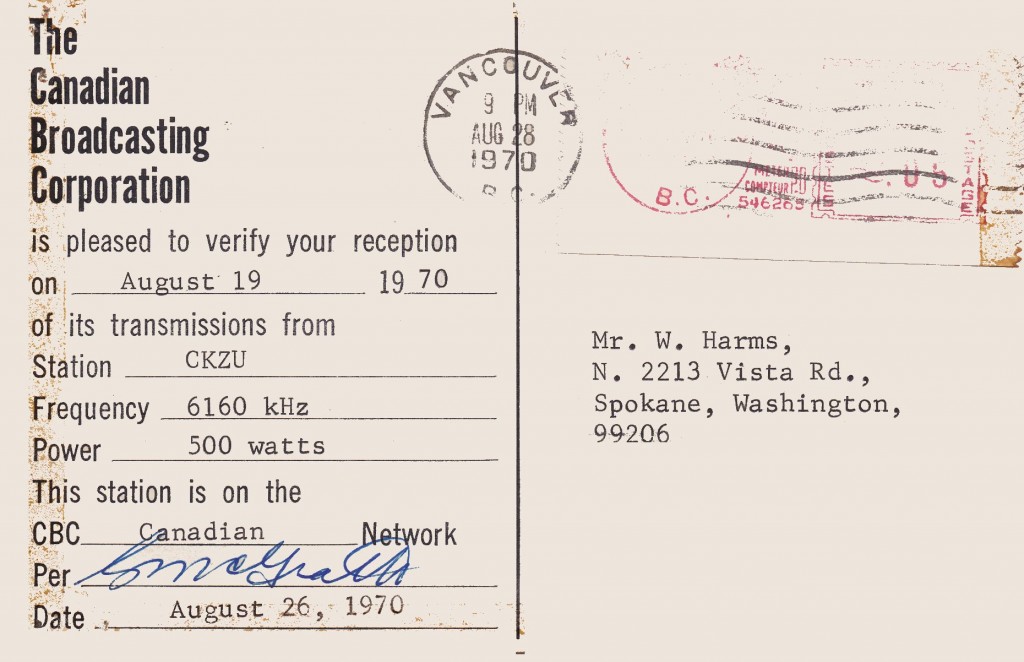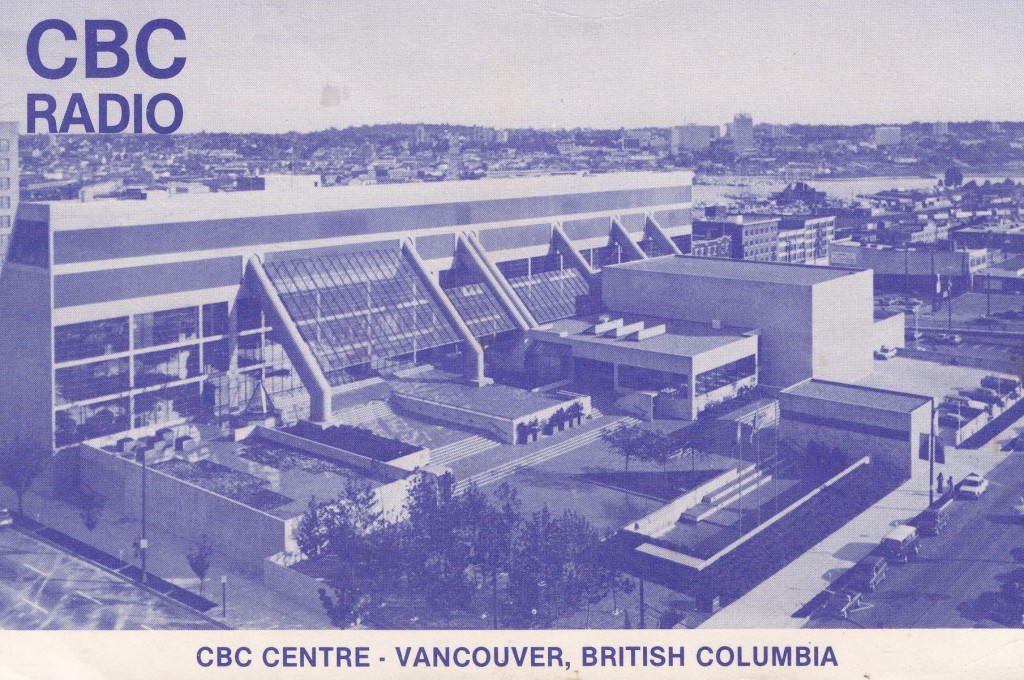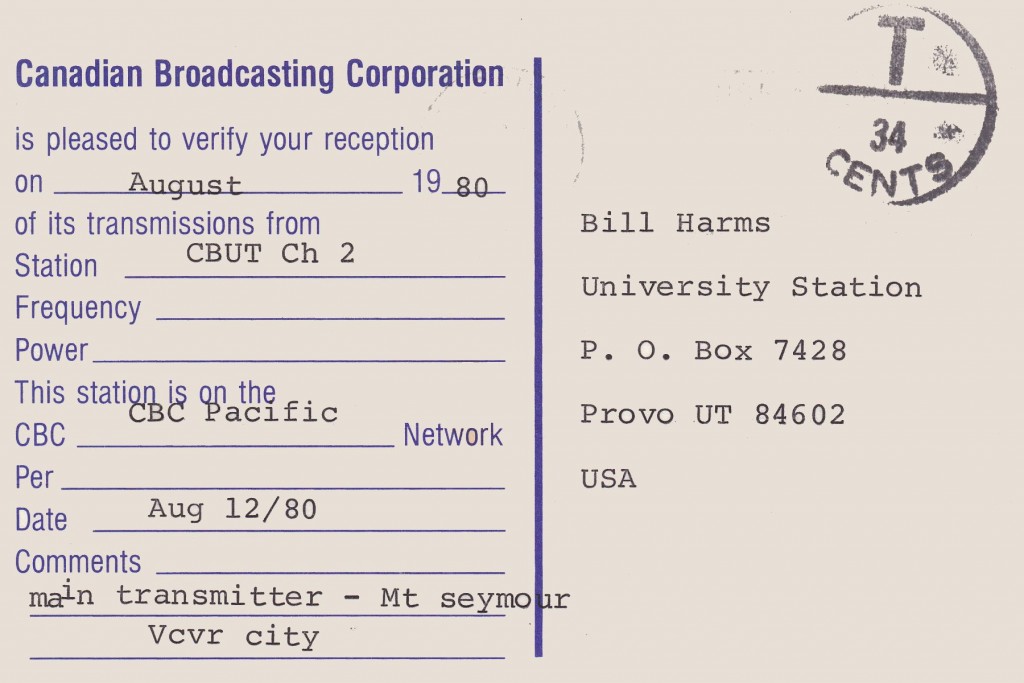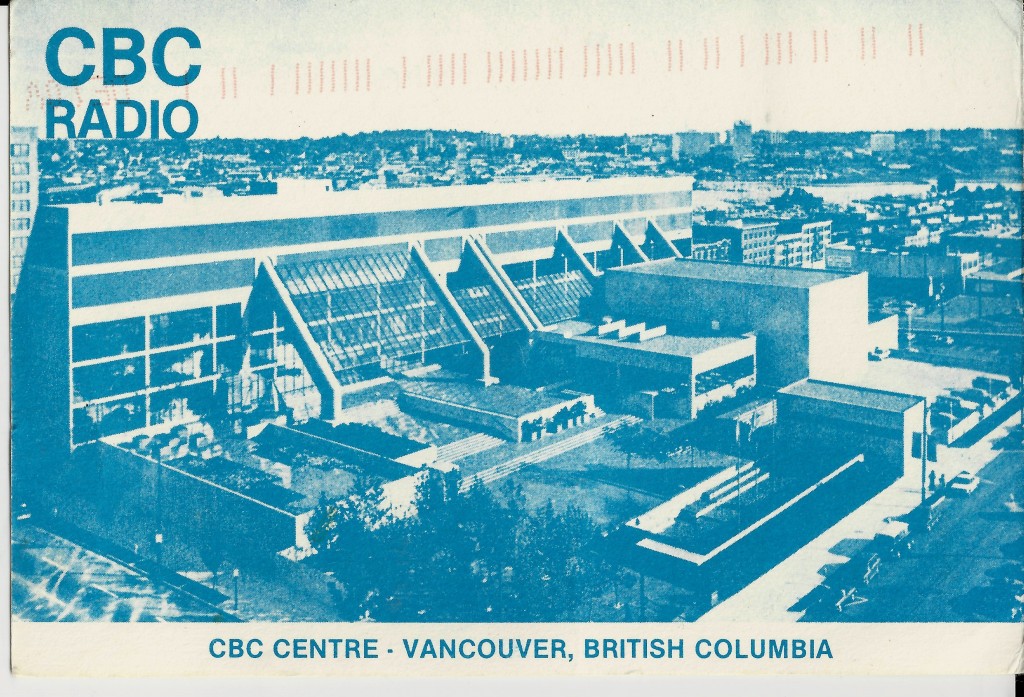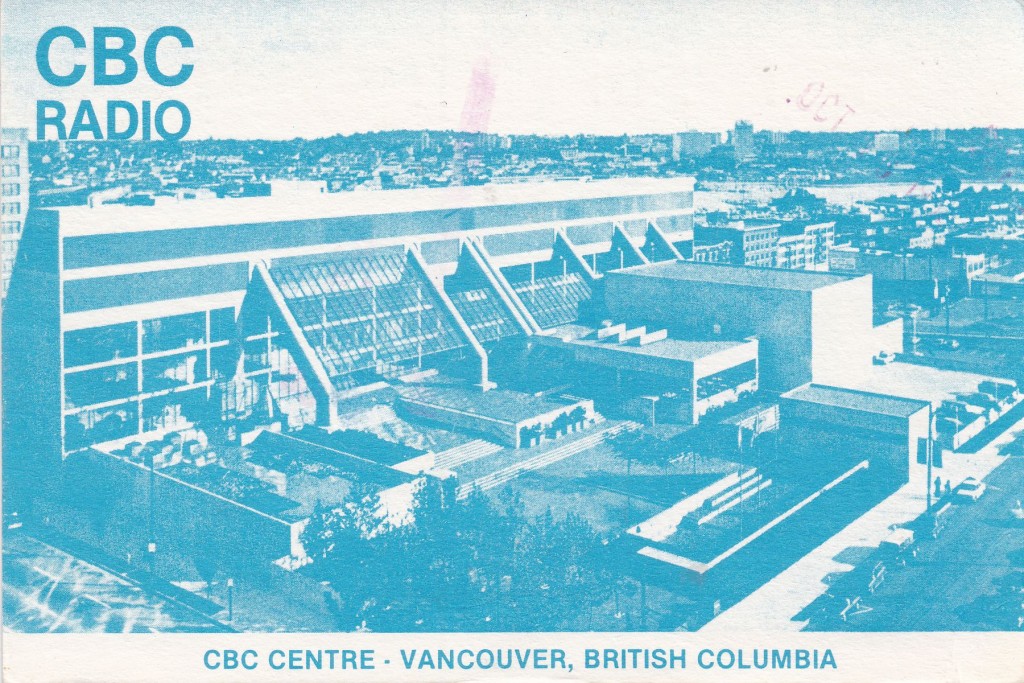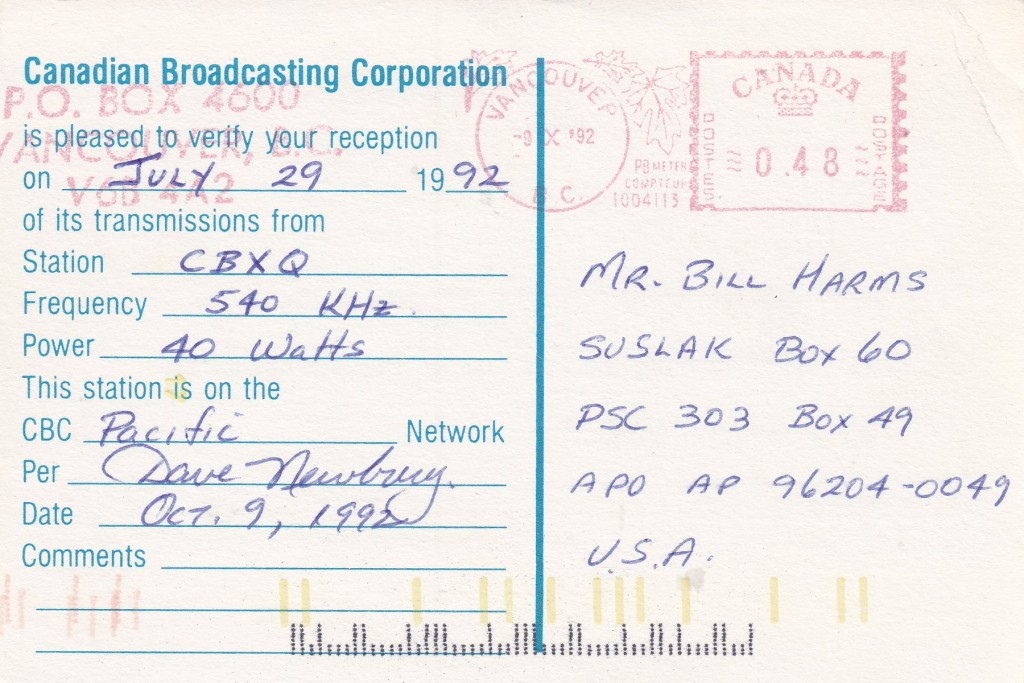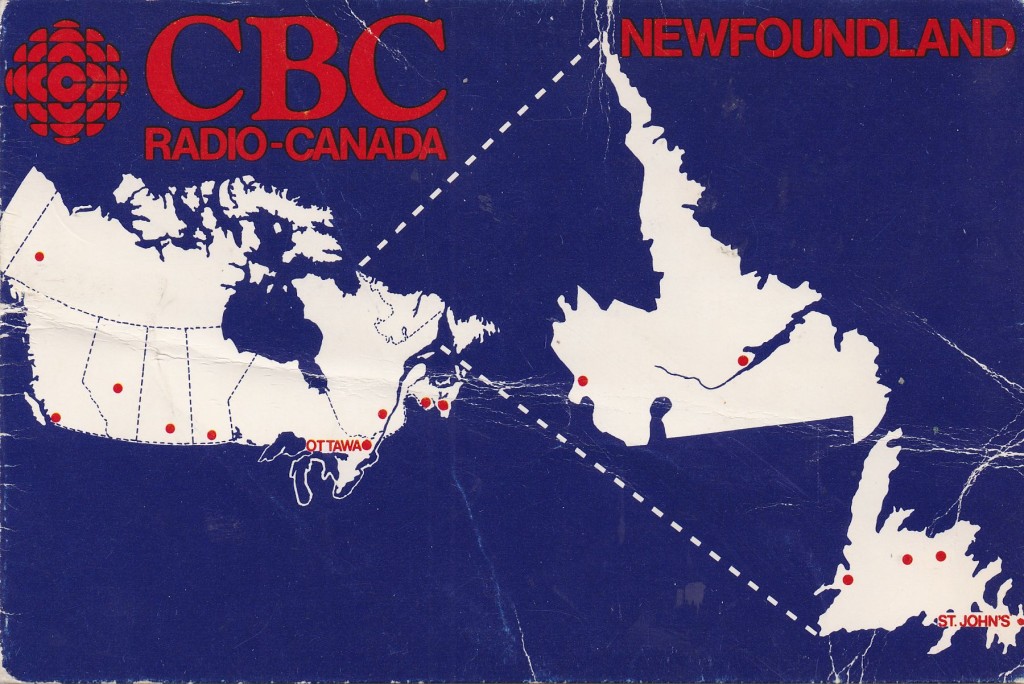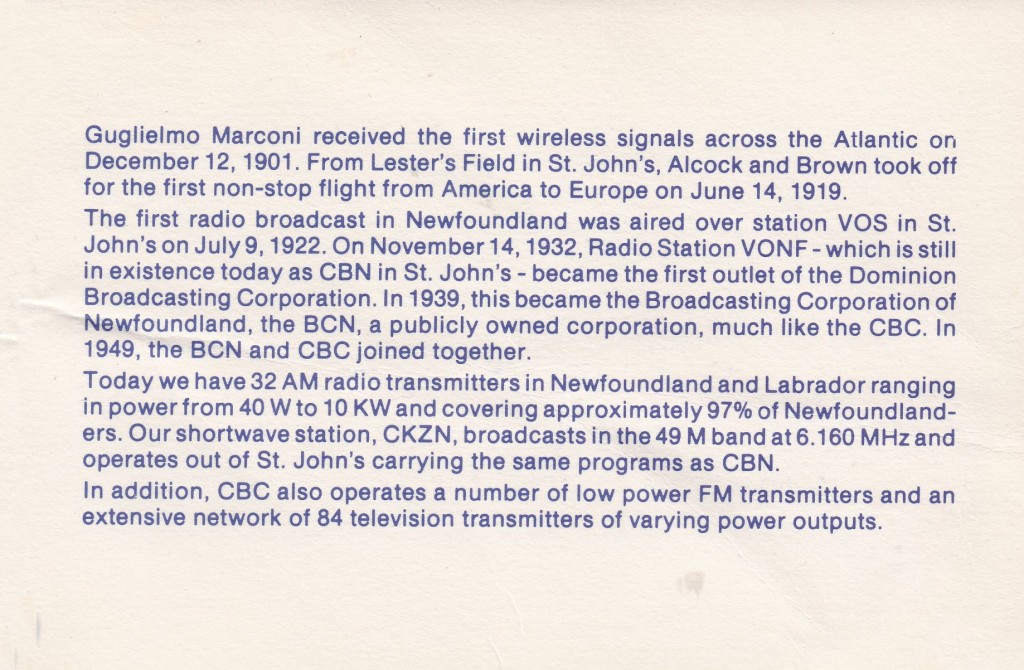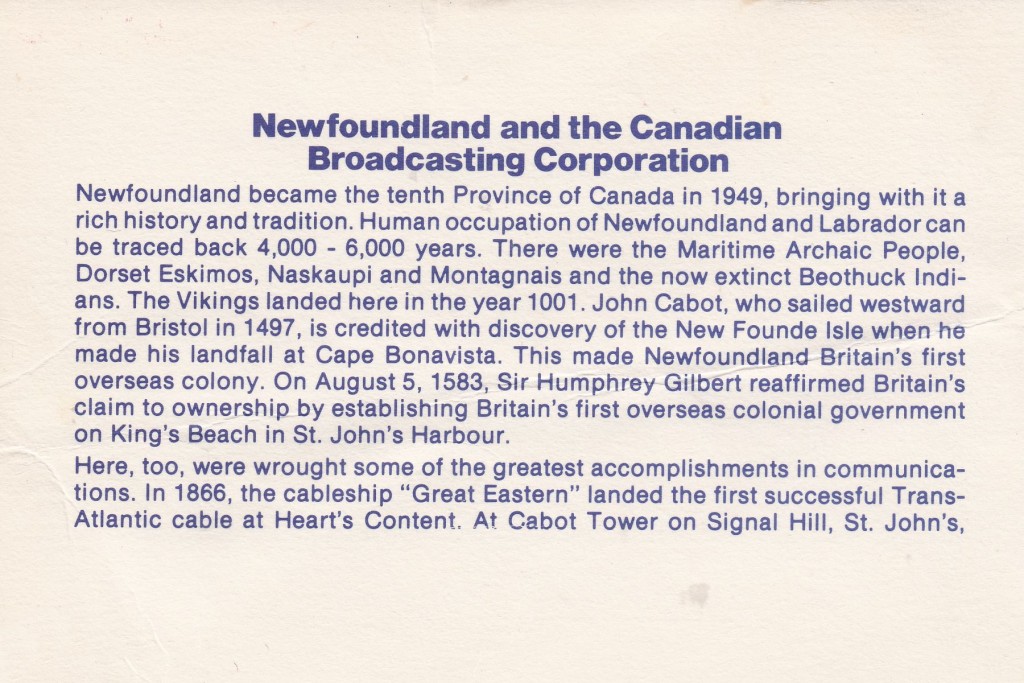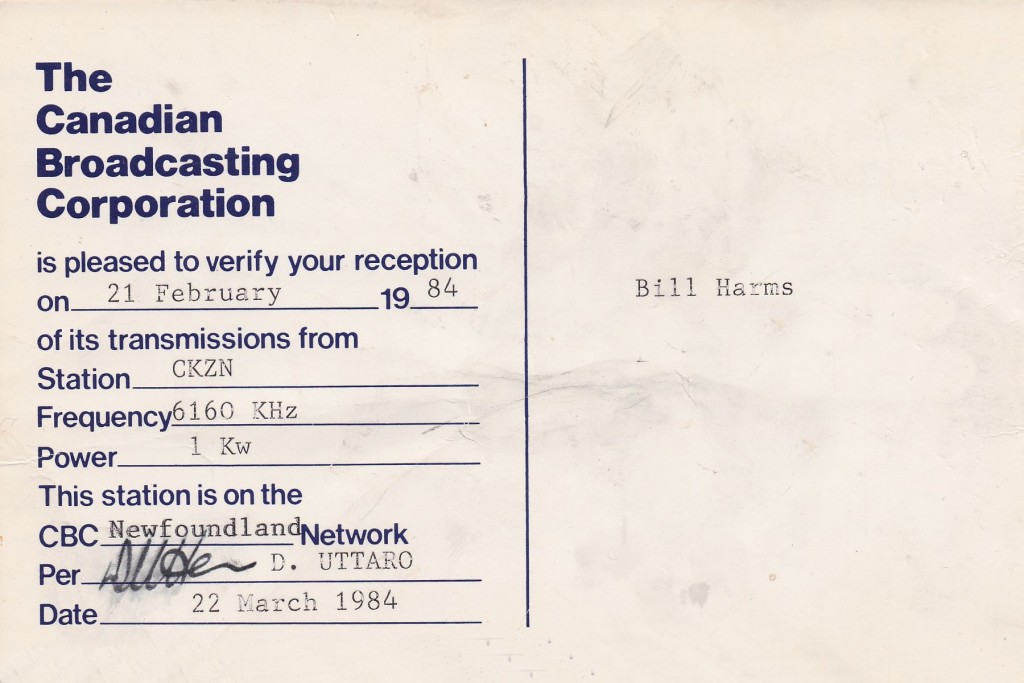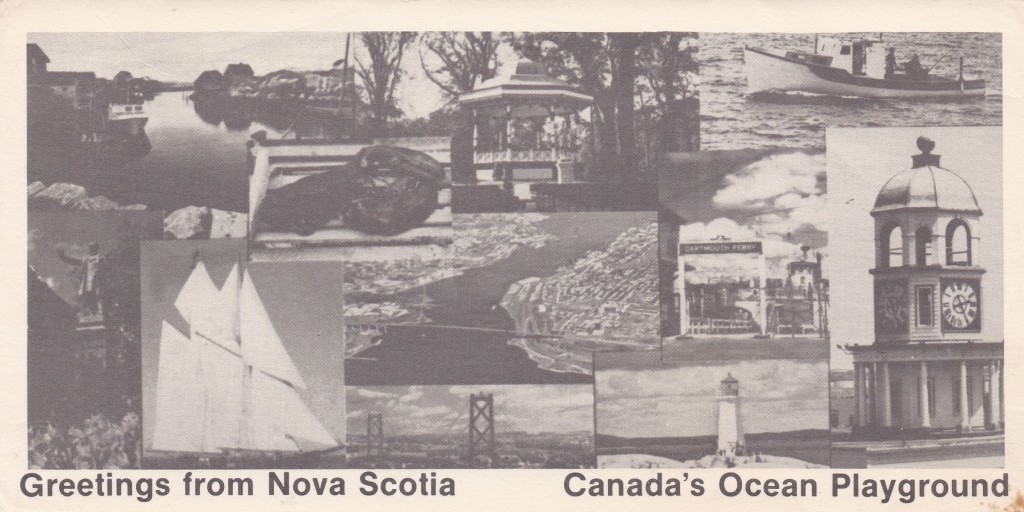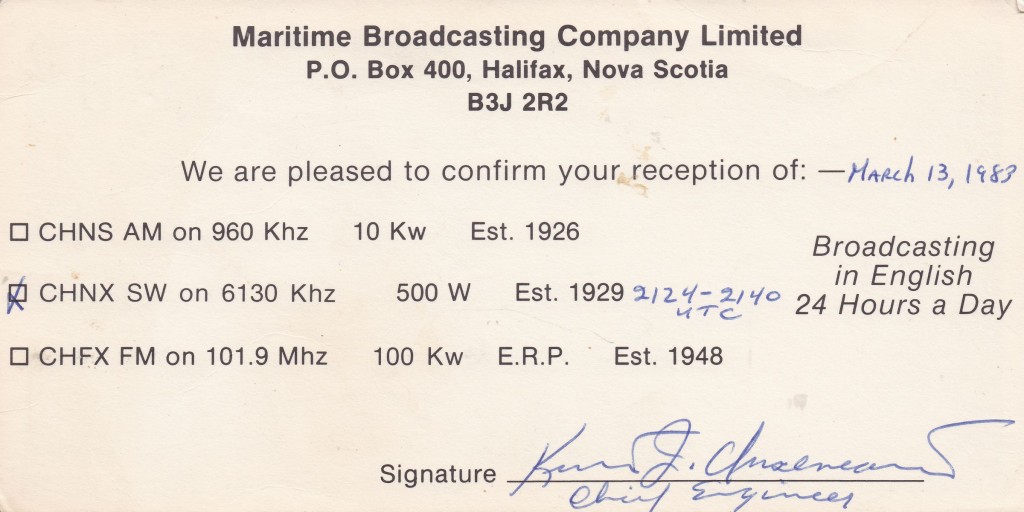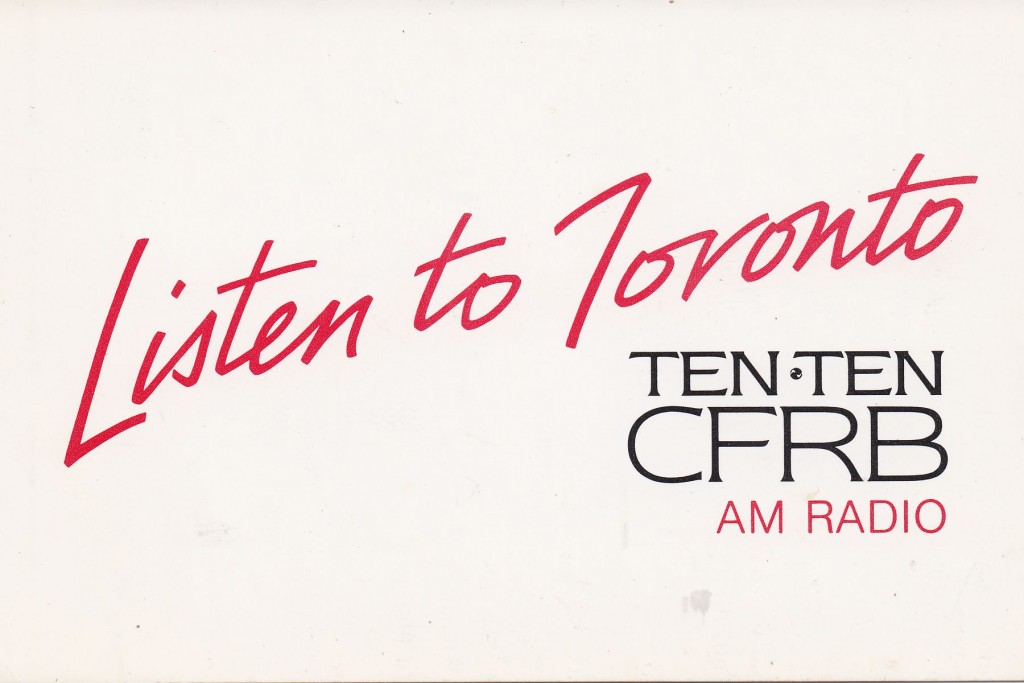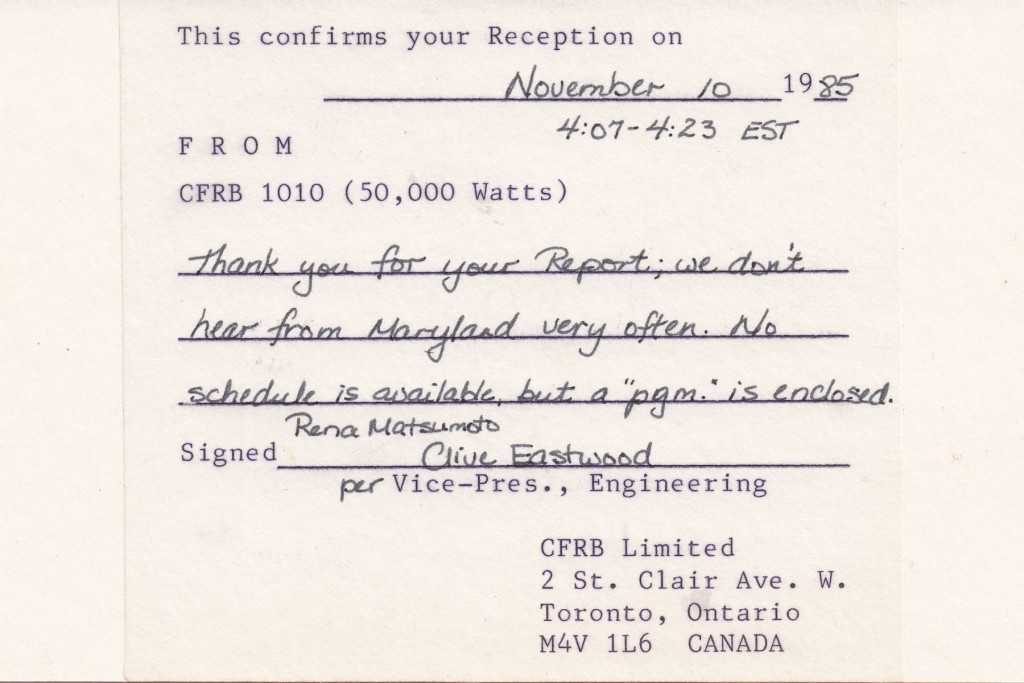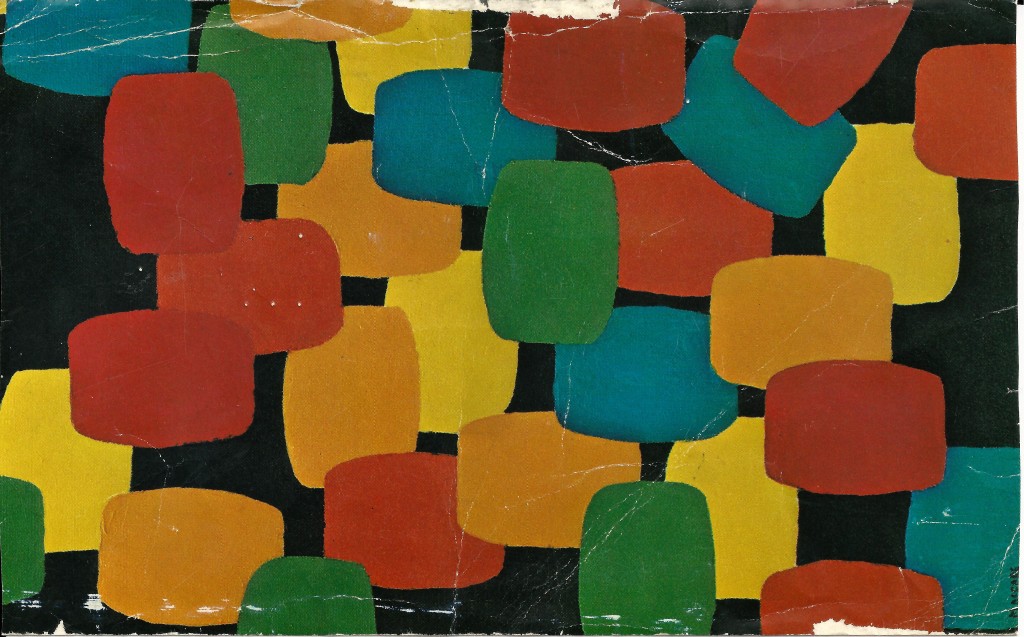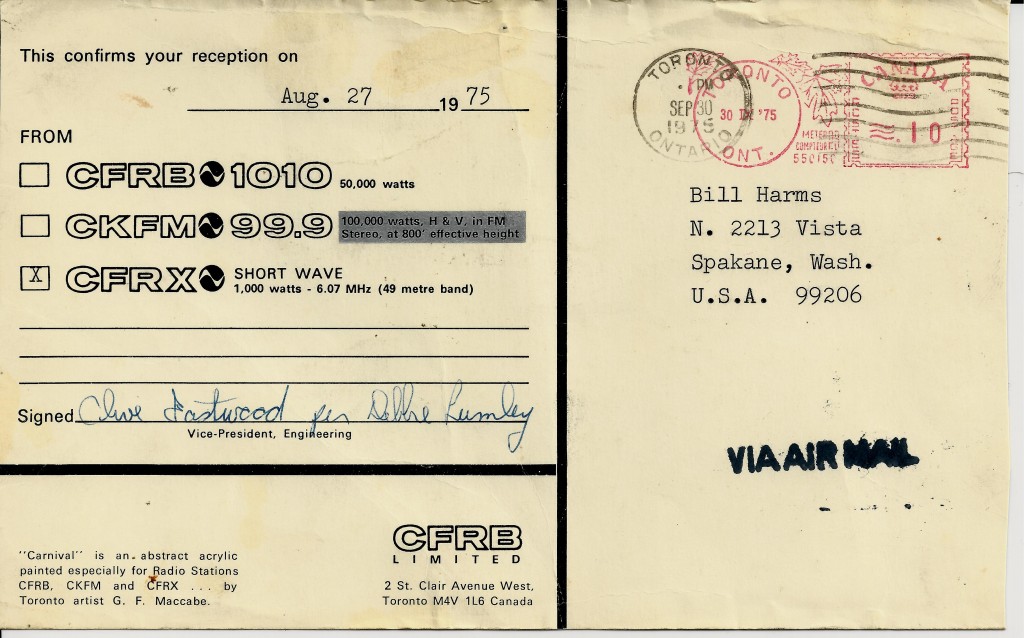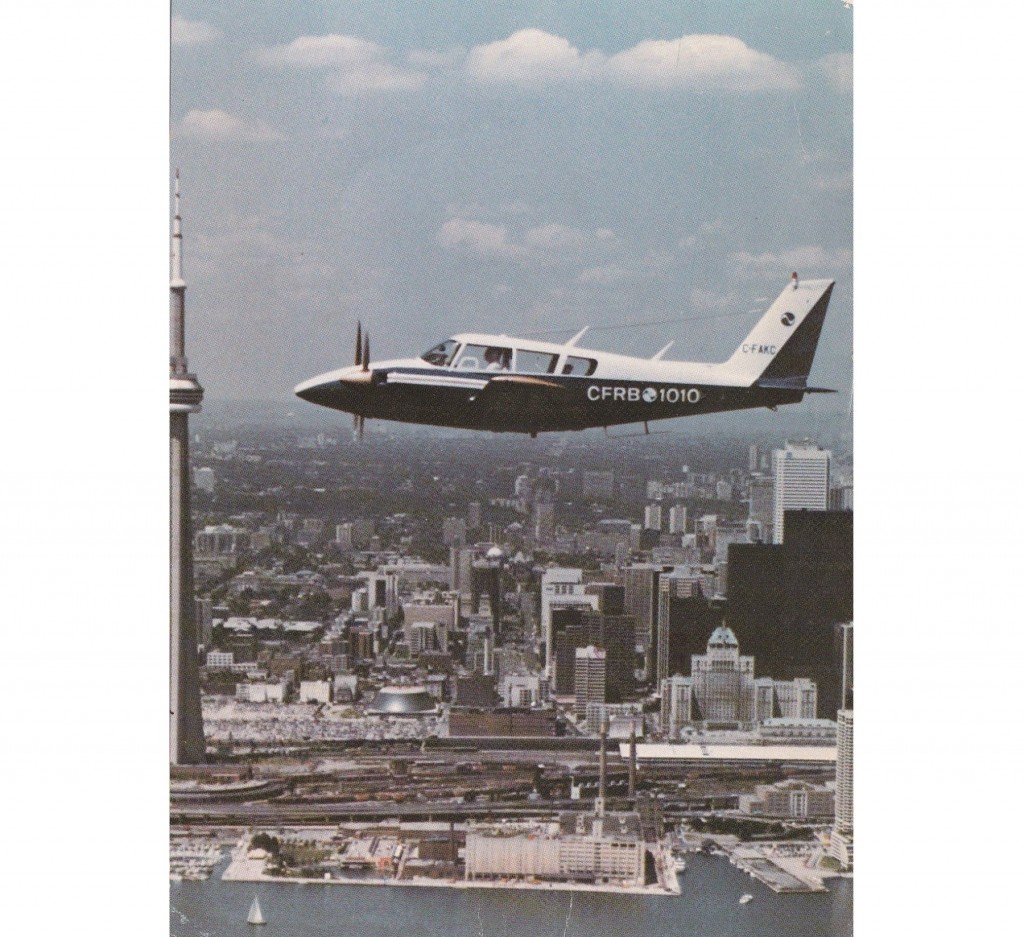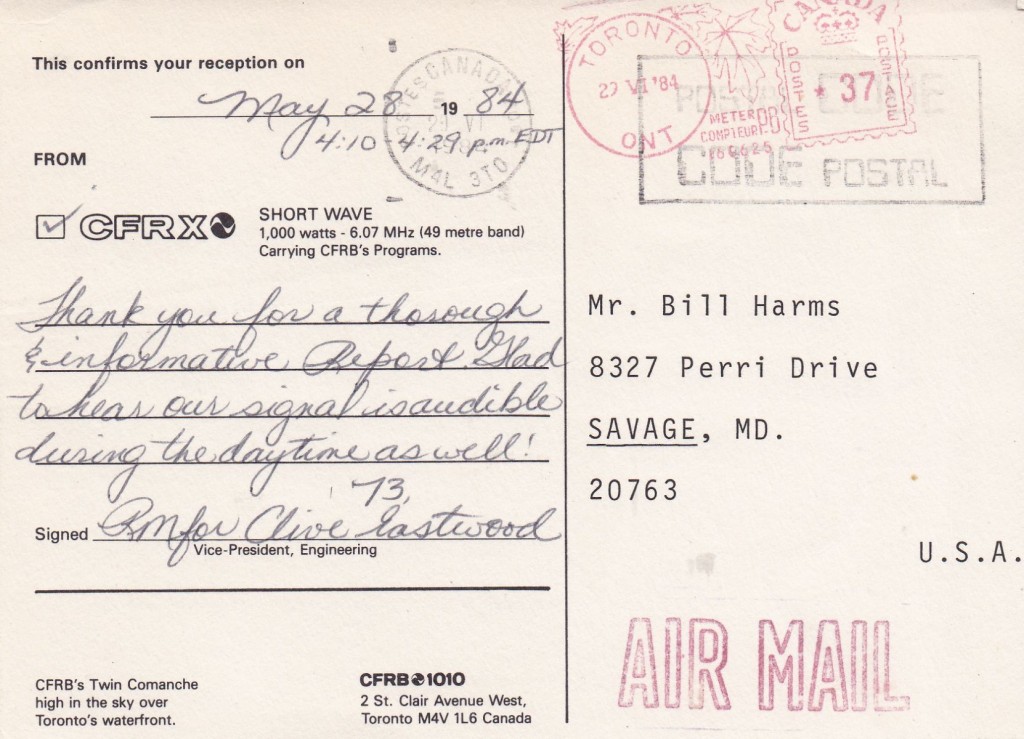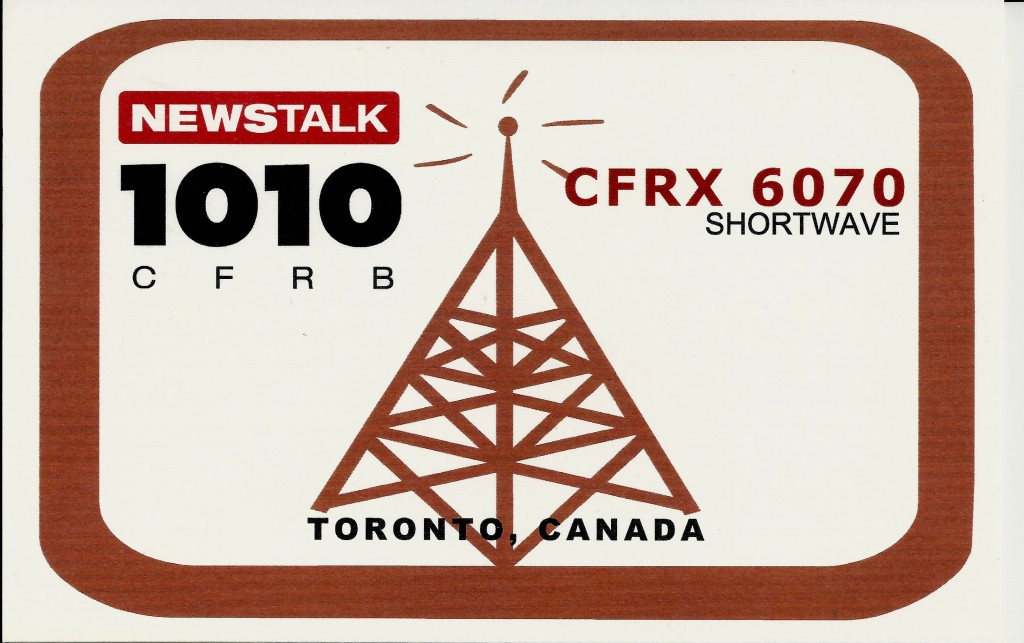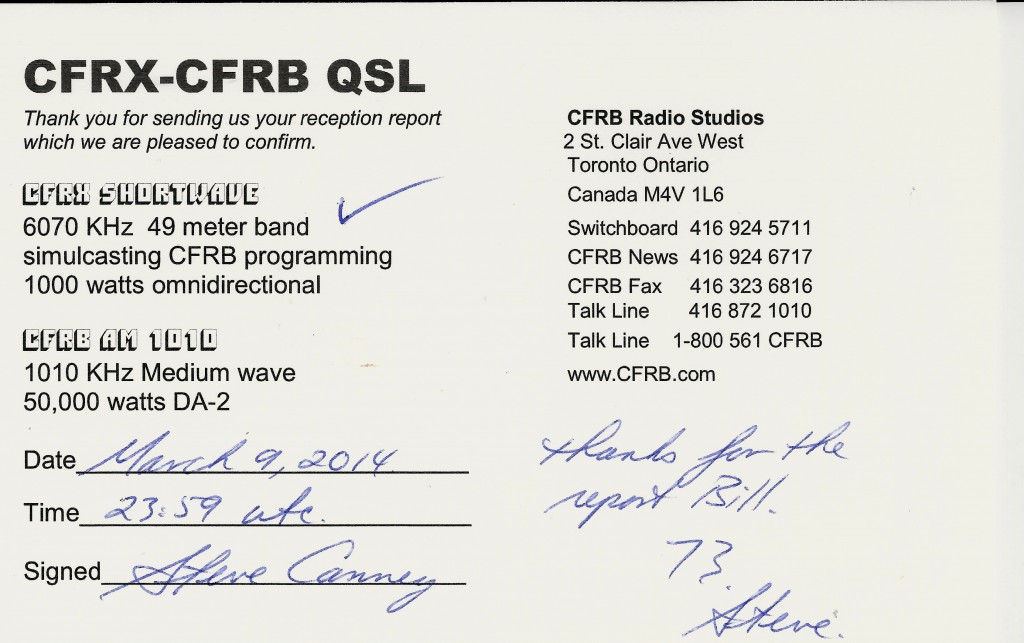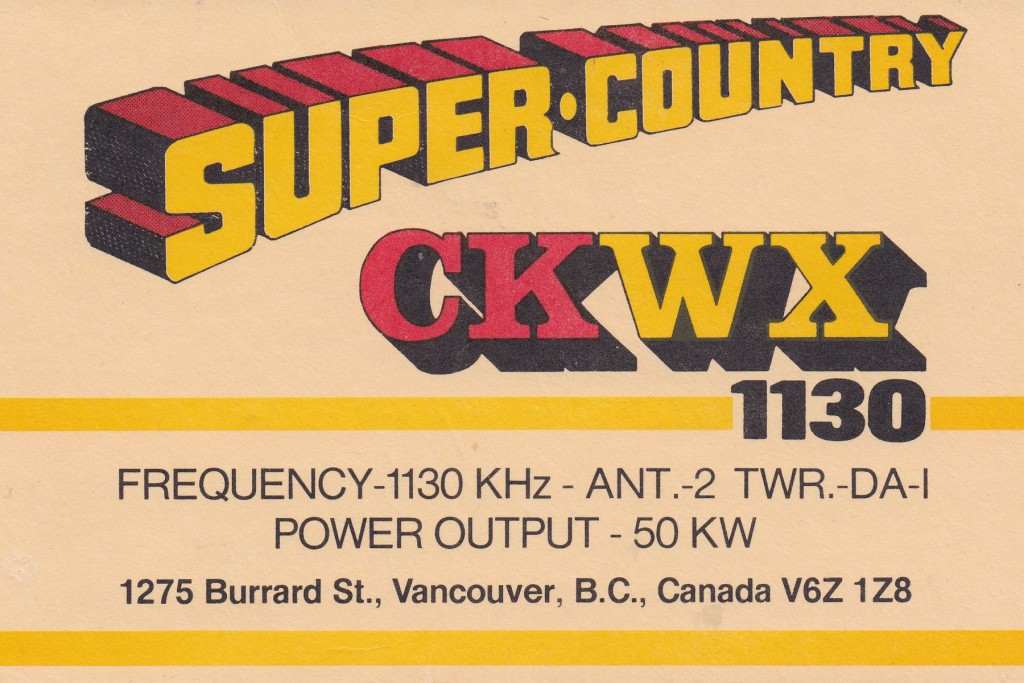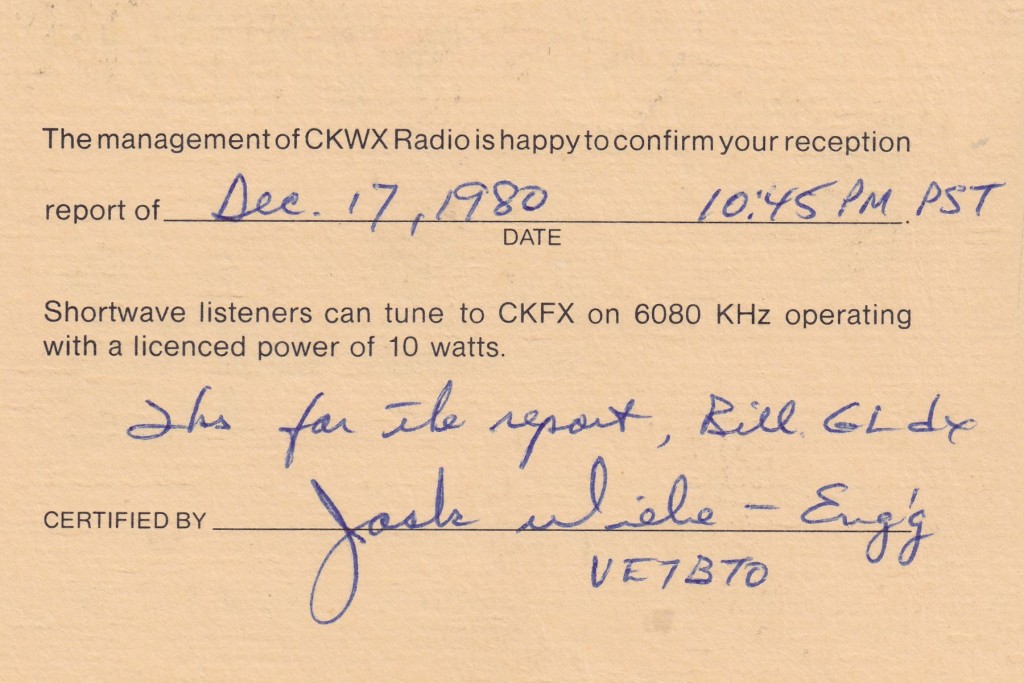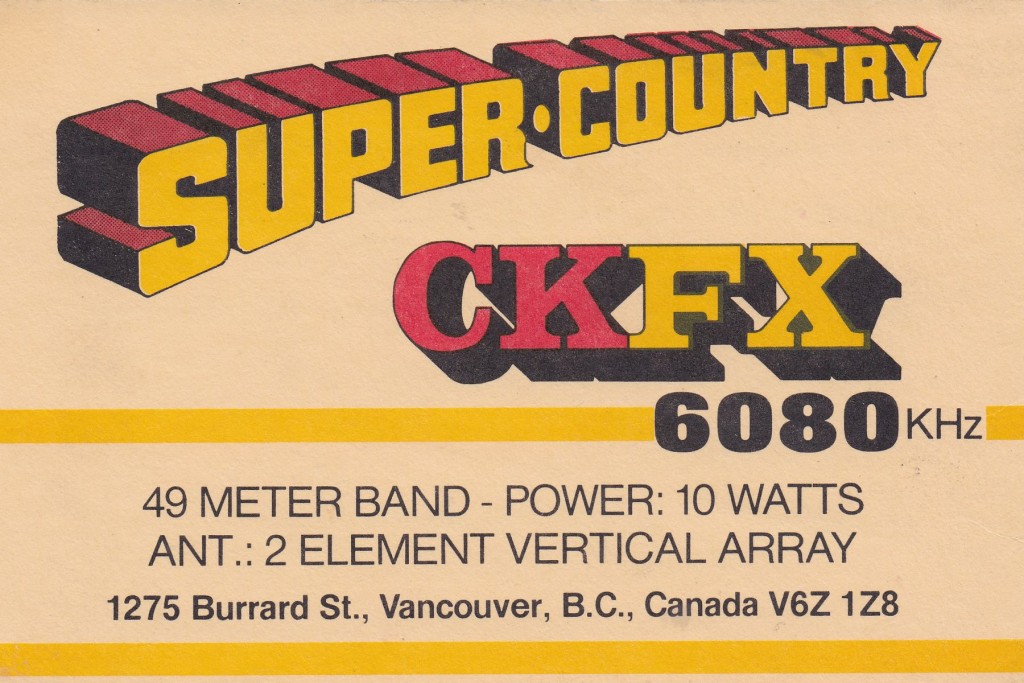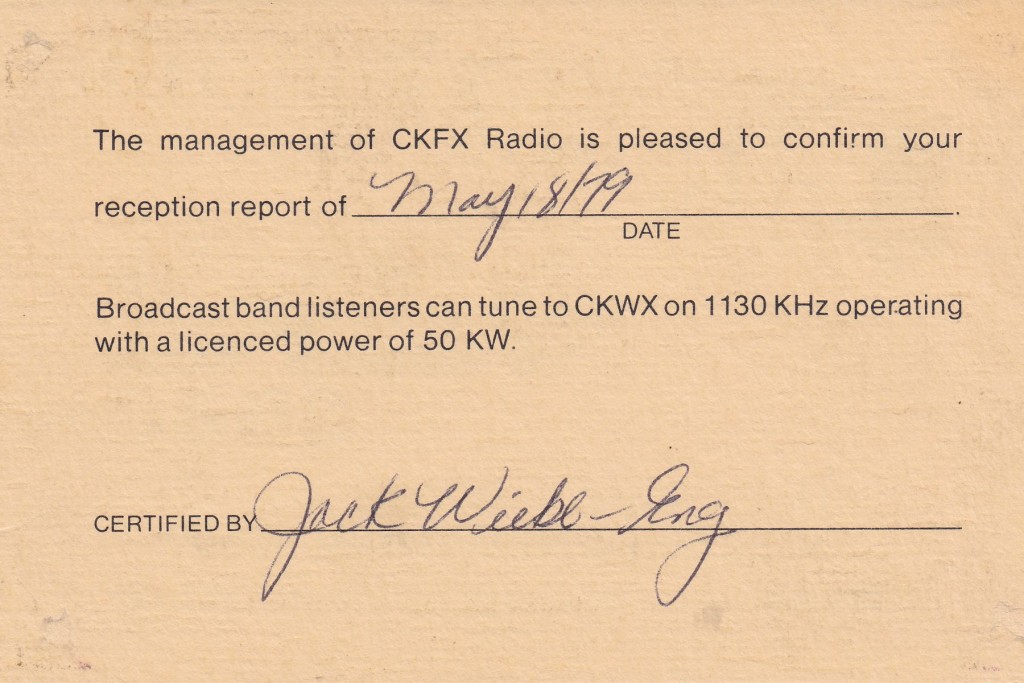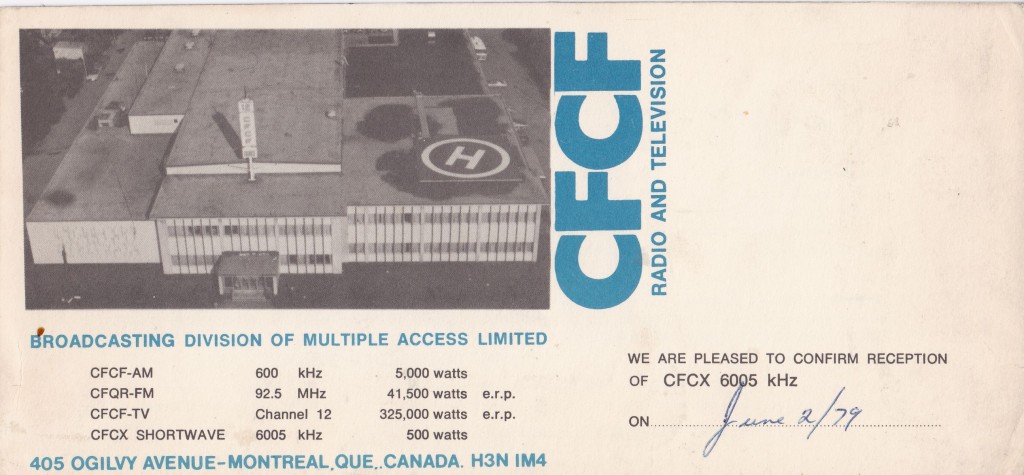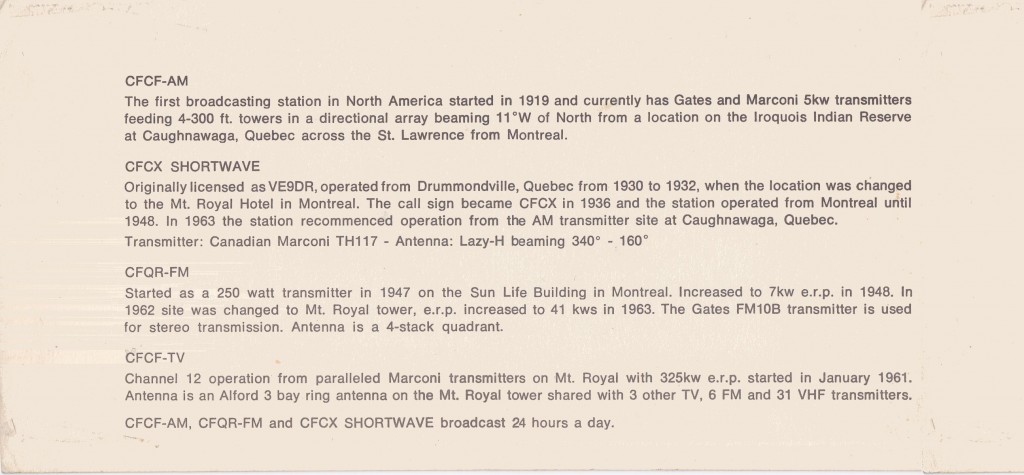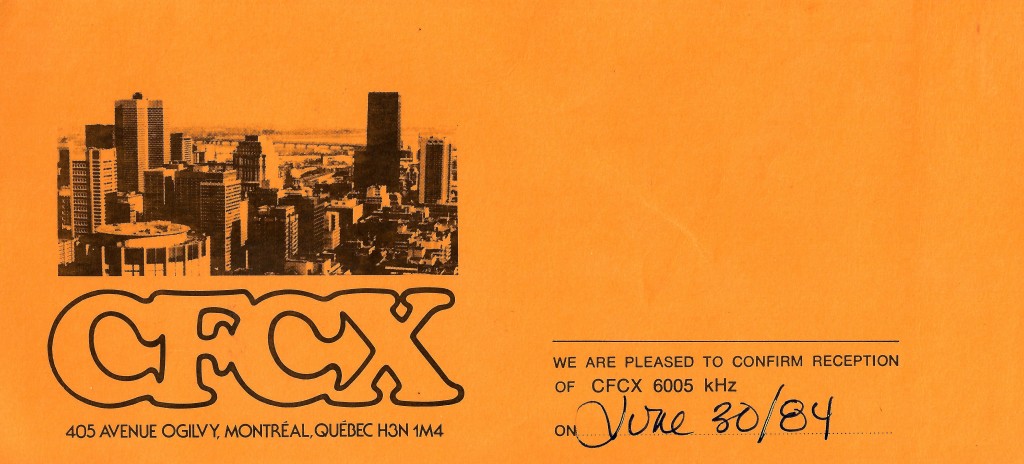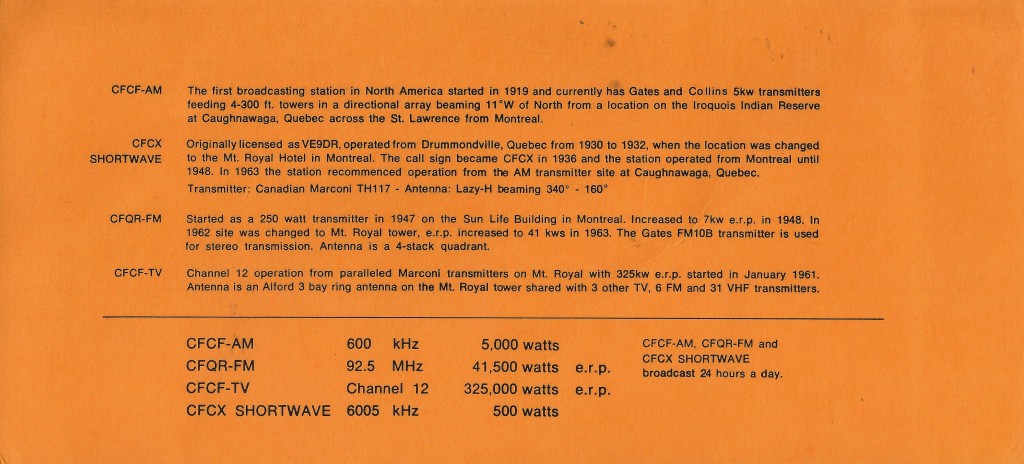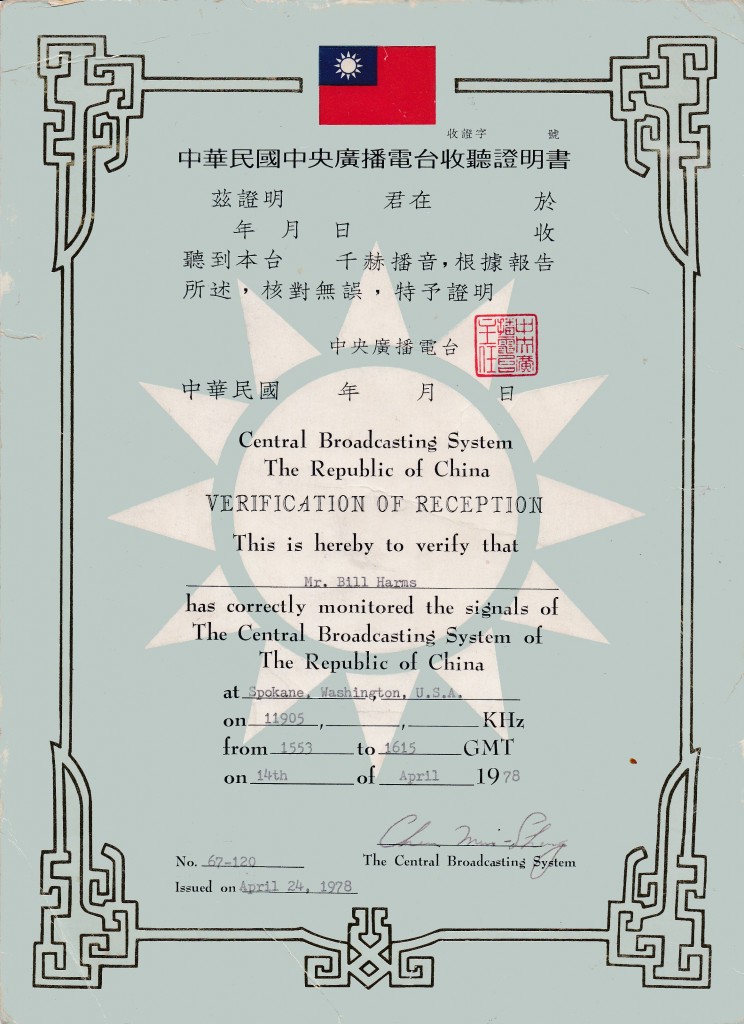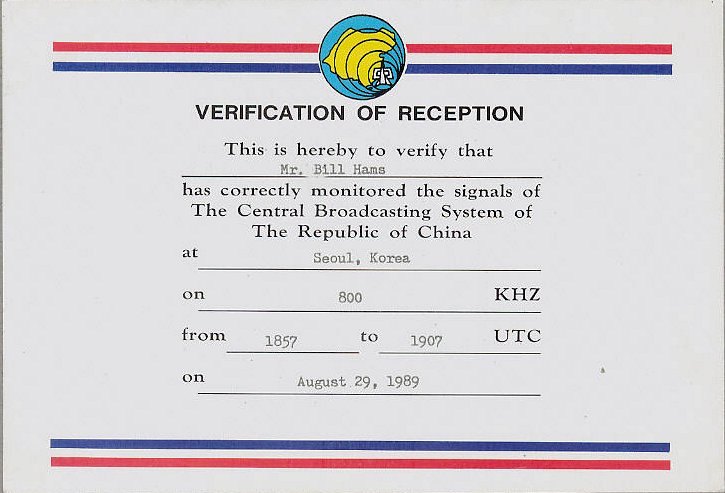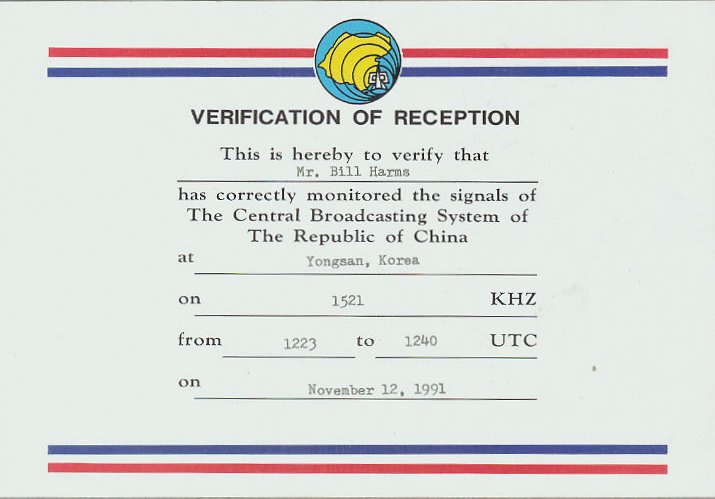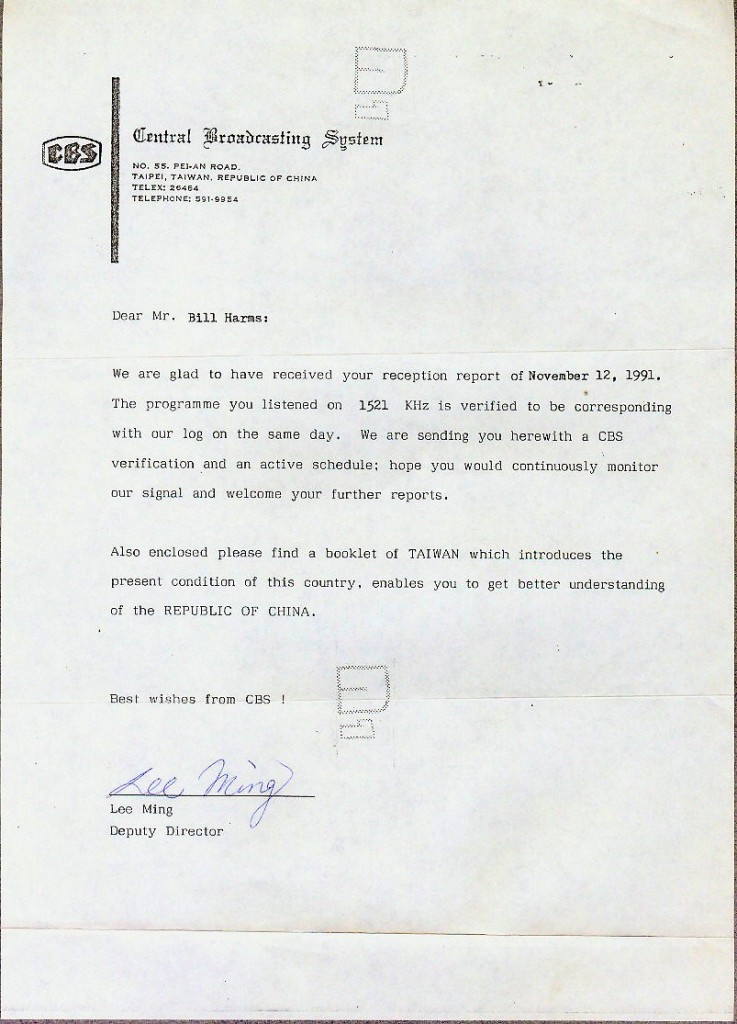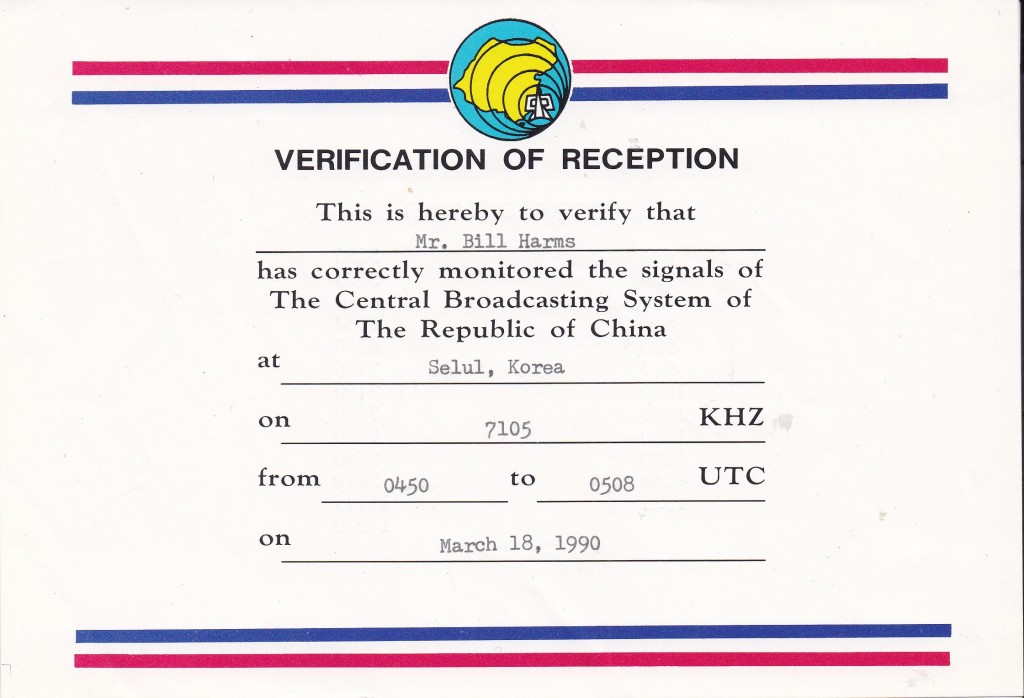Monthly Archives: October 2015
Far East Network (FEN) Okinawa
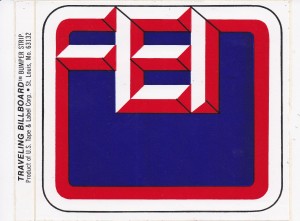 This time we will take a look at another Far East Network (FEN) outlet, FEN Okinawa. Although FEN Okinawa was in Japan proper, it was usually separated off from the other FEN stations in Japan.
This time we will take a look at another Far East Network (FEN) outlet, FEN Okinawa. Although FEN Okinawa was in Japan proper, it was usually separated off from the other FEN stations in Japan.
This verification letter is for a reception made in Seoul of their 648 kHz outlet. The station was administered by the Air Force’s Pacific Broadcasting Squadron.
Their MW outlet could be heard in Korea without much of a problem when the station in Russia was off the air.
Today, the station is called AFN Okinawa or Surf 648. Since the station in Russia on 648 is no longer on the air, it is an even easier catch in Seoul.
Far East Network (FEN) – Japan
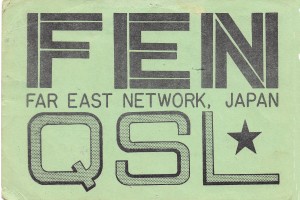
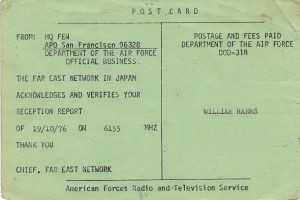 The Far East Network (FEN) was a network of radio and television stations that served U.S. servicemen in Japan, Philippines, Okinawa, Guam, and Hawaii. Their shortwave (SW) station in Japan could be heard world-wide. I remember picking the SW outlet up occasionally when I lived in Spokane and a few times in Utah. This QSL card verifies my reception of their SW outlet on 6155 kHz for a report sent to them when I lived in Korea. Their signal was consistent and very much readable.
The Far East Network (FEN) was a network of radio and television stations that served U.S. servicemen in Japan, Philippines, Okinawa, Guam, and Hawaii. Their shortwave (SW) station in Japan could be heard world-wide. I remember picking the SW outlet up occasionally when I lived in Spokane and a few times in Utah. This QSL card verifies my reception of their SW outlet on 6155 kHz for a report sent to them when I lived in Korea. Their signal was consistent and very much readable.
In 1997, the FEN was disestablished, and is now known as the American Forces Network (AFN). The network of stations in Japan is known as AFN Japan.
The AFN Japan stations are now on medium wave and can be heard in the Northeast Asia region when conditions are good. I heard their outlets on 1575 kHz on a DXpedition to Grayland, Washington. Their outlet on 810 kHz has been heard on the West Coast of North America.
Radio Pyongyang
There are two QSL cards from North Korea in my collection, both from Radio Pyongyang, the Korean Central Broadcasting Committee’s overseas broadcasting service. They can be a difficult station to receive a reply from. I guess I have been lucky because I am two for two. In 2002, Radio Pyongyang changed its name to The Voice of Korea. I don’t have a QSL from their Voice of Korea in my collection..
Radio Cameroon – Garoua
Radio Truth – 5015
Clandestine – Zimbabwe
This QSL letter is from the clandestine Radio Truth. (Anyone remember them.) They were on the air for just a short while. It was associated with the political situation in Zimbabwe. I believe it transmitted from South Africa.
Radio Dabanga
Flag of Freedom
Radio Santech
Radio Santech can be heard here in Maryland with fairly strong signal. This QSL verifies a reception of their program via IRRS in Saftica, Romania on 15,190 kHz. The report was sent to the address shown here on the QSL. They broadcast on shortwave in English for only thirty minutes per per week.
Radio Santech is operated by a religious organization called Universal Life from Würzburg, Germany.
(Click on the link below to see the entire blog entry.) You see more about their organization at http://www.universelles-leben.org/en/
The posting of the QSL information for any station on this blog is for hobby purposes, and does constitute any type of an endorsement.
Radiodiffusion Television Algerienne التلفزيون الجزائري
Radio Botswana
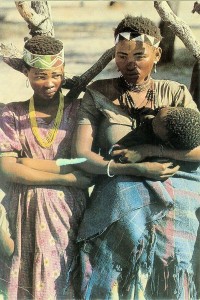 Radio Botswana is a governmental broadcasting service headquartered in Gaborone. Their broadcasts could be heard on shortwave on 3356 kHz and 4830 kHz. Who can forget their cow bell clanking interval signal when they signed on? I am not sure when they closed down their shortwave service, but I know they were still operating through the 1990’s. Today, their radio programs are broadcast on two networks, Radio Botswana 1 (RB 1) and RB 2. These can be heard live at http://www.radiobotswana.gov.bw/ A historical sketch of Radio Botswana can be found at http://www.dib.gov.bw
Radio Botswana is a governmental broadcasting service headquartered in Gaborone. Their broadcasts could be heard on shortwave on 3356 kHz and 4830 kHz. Who can forget their cow bell clanking interval signal when they signed on? I am not sure when they closed down their shortwave service, but I know they were still operating through the 1990’s. Today, their radio programs are broadcast on two networks, Radio Botswana 1 (RB 1) and RB 2. These can be heard live at http://www.radiobotswana.gov.bw/ A historical sketch of Radio Botswana can be found at http://www.dib.gov.bw
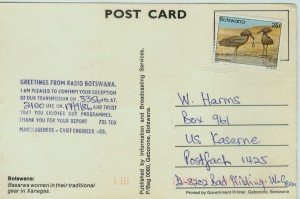 Botswana is still on the shortwave bands. The USA’s International Broadcasting Bureau (IBB) operates a relay station in Selebi-Phikwe. So it is still possible to receive a QSL for shortwave broadcasts from Botswana if one missed receiving one for Radio Botswana. A short treatise of this relay station can be seen at http://www.paws.dircon.co.uk/Bots6a.htm
Botswana is still on the shortwave bands. The USA’s International Broadcasting Bureau (IBB) operates a relay station in Selebi-Phikwe. So it is still possible to receive a QSL for shortwave broadcasts from Botswana if one missed receiving one for Radio Botswana. A short treatise of this relay station can be seen at http://www.paws.dircon.co.uk/Bots6a.htm
Radio Verdad
Antique Amateur QSL card – 7VL from 1927
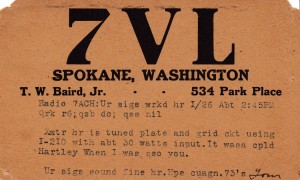
This time we are going to do something a little different and present an antique ham (amateur radio) QSL. This was T.W. (Tom) Baird’s QSL. His call sign was 7VL. He sent this QSL card to another ham operator Howard Truax of Albany, Oregon using the call sign 7ACH.
I find it interesting that the shorthand ham operator’s used back then is not much different in concept for the shorthand used for text messaging and other social media on the Internet. So much for re-inventing the wheel.
Tom was an engineer at radio station KFPY (now KXLY) in Spokane for several years and I understand served as chief engineer for a while.
Radio Baghdad
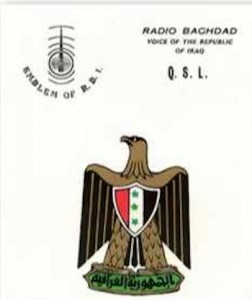
Over the years, three QSLs from Radio Baghdad have made it into my collection. The first one shown here, besides being the largest QSL in my collection, I would consider this to be one of the most unusual. It measures almost 22 inches by 11 inches. It features several icons of Iraq, including silhouettes of Shahazad and Shahrayar of One Thousand and One Nights fame. Also included are various scenes from around Iraq and some geographical information. Of particular interest are the two postage stamps displaying the likeness of Saddam Hussein.
As I remember, Radio Baghdad was a sporadic broadcaster. It seems that they were strong at times, and then would disappear. There is no international broadcast from the territory of Iraq today. These QSLs are a treasured part of my collection.
CBI Sydney
CBA 1070
Moncton, New Brunswick
CBA Radio, Moncton, New Brunswick was a fairly reliable signal many times at night on 1070 kHz at my listening post in Maryland. CBC Radio One moved its programming to FM in 2008 and the AM outlet went silent.
CBC Windsor
CBW 990
Winnipeg, Manitoba
CBW , the Canadian Broadcasting Corporation (CBC) outlet in Winnipeg, Manitoba traces their origins back to 1923 when it signed on as CKY. In 1933, CKY became a partial CBC outlet. In 1948, CBC purchased CKY outright and started to use the call letters CBW. The Call letters CKY were transferred to a new commercial station. CBW programming is re-broadcast on several FM outlets in Manitoba.
CBW was an easy catch in Spokane, and I have also heard them several times in Maryland. They sent the two QSL cards for reception reports sent to them.
CBX Radio 740
Edmonton, Alberta
CBX, the Canadian Broadcast Corporation (CBC) outlet in Edmonton started out on 1010 kHz in 1948. On 1 October 1964, CBX moved to 740 and CBR Calgary assumed the use of 1010. Currently, CBX is rebroadcast on several FM outlets throughout northern Alberta.
CBX would boom into Spokane in the 1970’s when conditions favored to the north. I sent a reception report off in 1977 and they responded with the QSL card below.
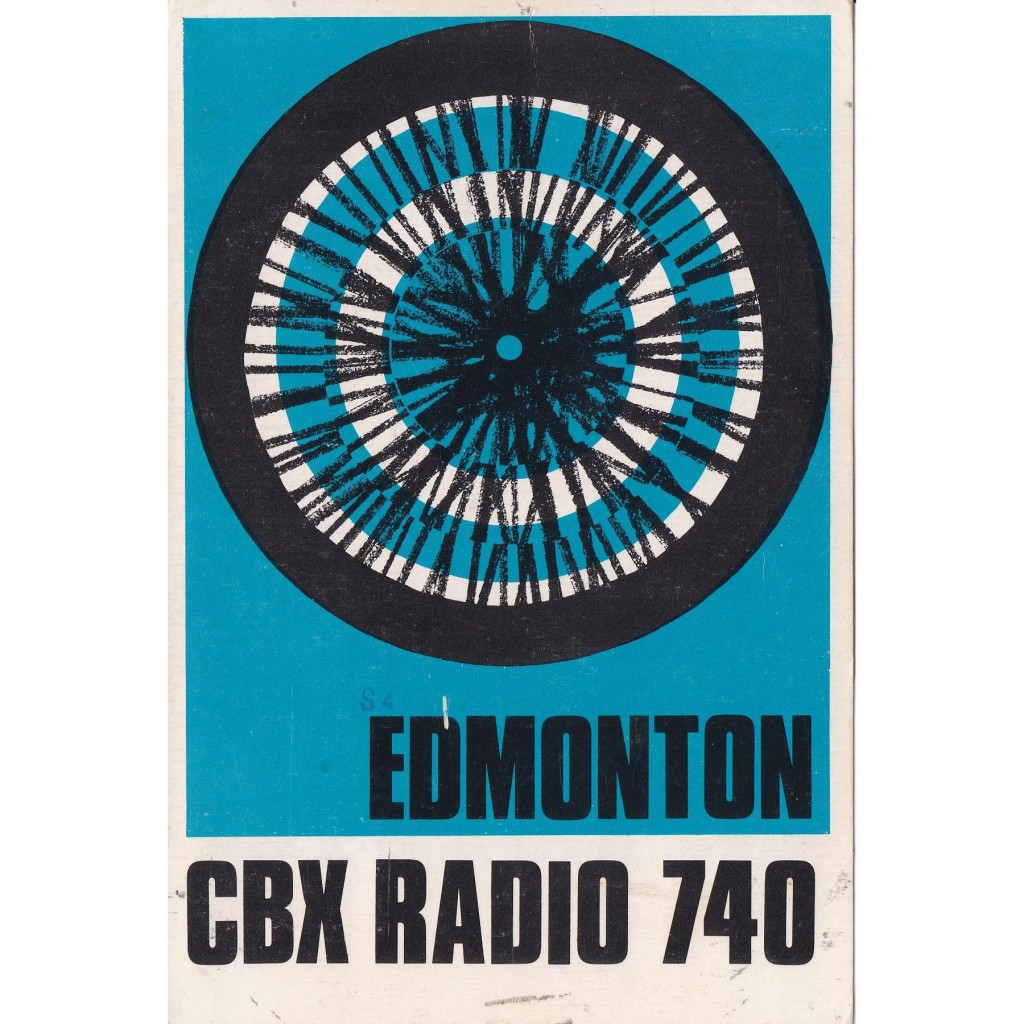
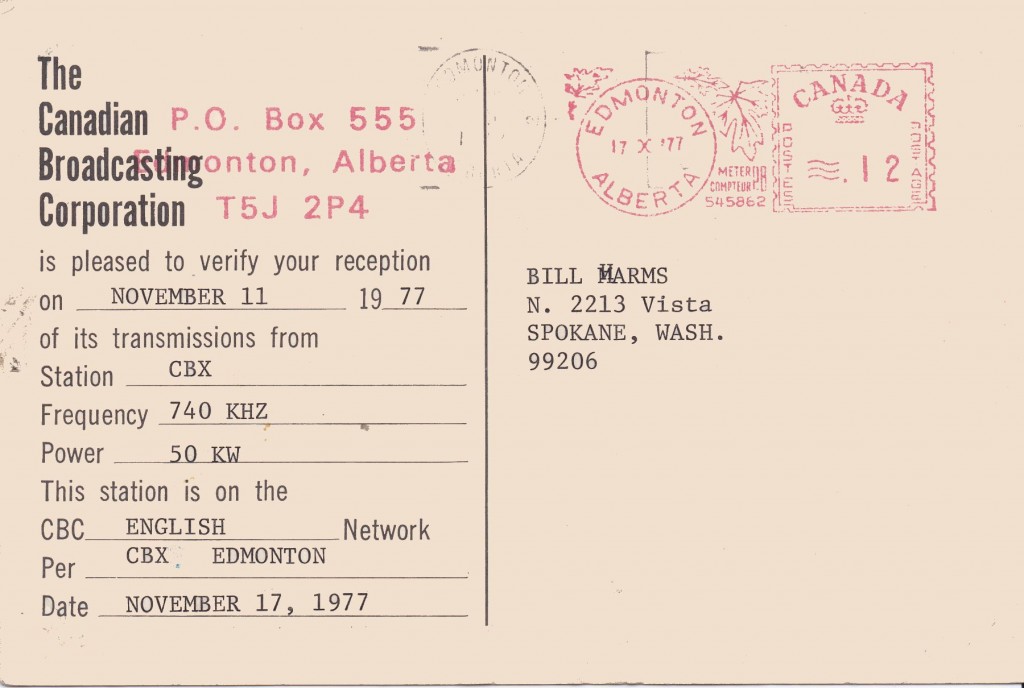
CBC Calgary, Alberta
1010 and 1460
CBR Calgary, Alberta on 1010 kHz was a regular reception in Spokane in the late 1960’s and 1970’s (and still is I assume). I remember tuning my little 8-transistor hand-held radio to their signal and placing it under my pillow to listen to them as I went asleep. Their programming was relayed on an outlet in Medicine Hat on 1460 kHz for a while. The 1010 kHz is still on the air, while 1460 kHz has since gone dark. CBR is also relayed on several FM outlets and one AM outlet as of this writing.
CBC Vancouver
This set of QSLs from Canadian Broadcasting Corporation (CBC) Vancouver is a sampling of different types of stations. I had fun picking up the various ways they transmitted their signals and receiving QSL cards for my reports. Continue reading to see what I am talking about.
The first one is for their medium wave flagship station (CBU) on 690 kHz. This outlet can be easily heard throughout the West, but it does have to contend with interference from the station in Tijuana, Mexico. I could hear it all day long, especially in the winter in Spokane.
The second QSL below is for their main FM outlet (CBU-FM) on 105.7 MHz. They can be heard in the Seattle area with a fair signal. For this report, the reception was made at Moran State Park, on the San Juan Islands, Washington State.
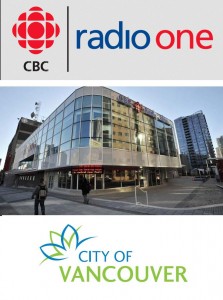 The third QSL is for their shortwave service (CKZU) on 6160 kHz which can be heard throughout the world under proper conditions. I could hear them all day long in Spokane, and occasionally all day long in Utah.
The third QSL is for their shortwave service (CKZU) on 6160 kHz which can be heard throughout the world under proper conditions. I could hear them all day long in Spokane, and occasionally all day long in Utah.
The fourth QSL is for the analog television station on channel 2. I managed to pick them up in Heber City, Utah on E-Skip. They were quite strong.
The fifth one is for the reception of a regional FM outlet (CBTA-FM) 94.7 MHz in Trail, BC. Amazingly, they could be fairly frequently heard in certain areas in Spokane on a car radio. I sent a report to Vancouver when I heard them on vacation to Spokane and received this card.
The sixth and final QSL is for their low-powered relay station (CBXQ) in Ucluelet, BC on Vancouver, Island. This 40-watt outlet on 540 kHz can be heard for a fair distance up and down the coast during the day. I heard them a couple of times in Utah on a beverage antenna after CBK signed off at midnight. My report this time is for a reception made at the Kalaloch Campground in the Olympic National Park along the coast. It was quite strong.
(Please scroll down to see all the QSLs)
(NOTE: Not all of the reception locations match my mailing addresses because they were vacation loggings.)
